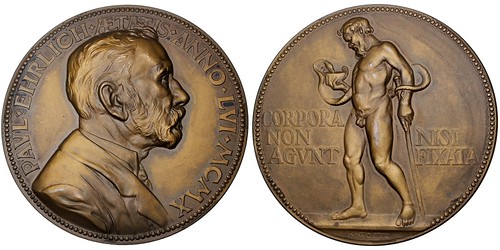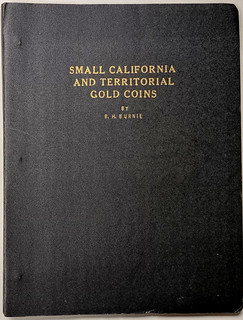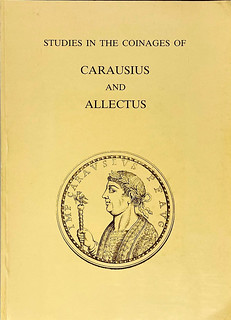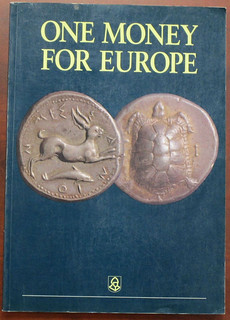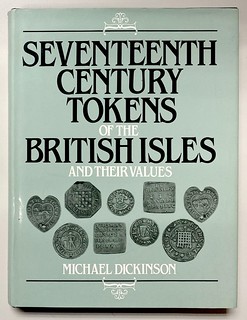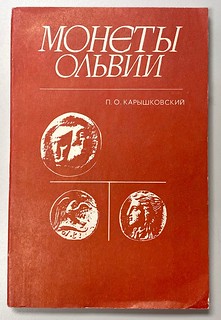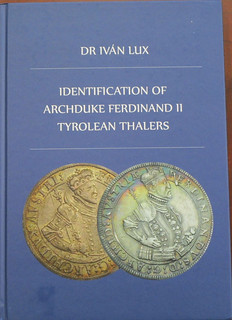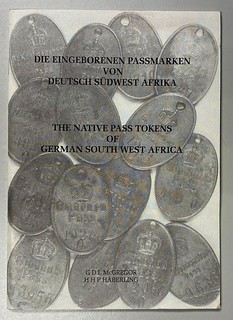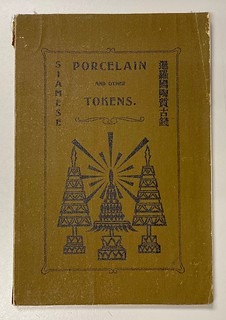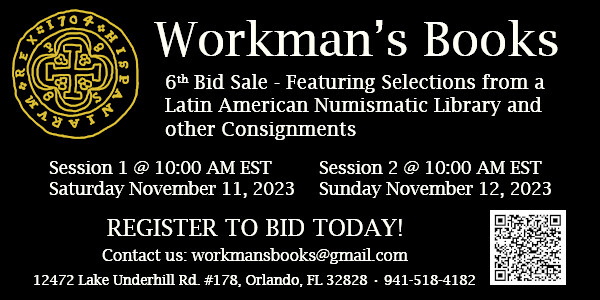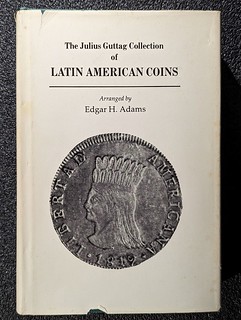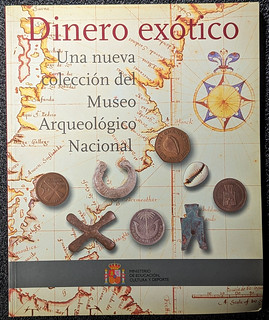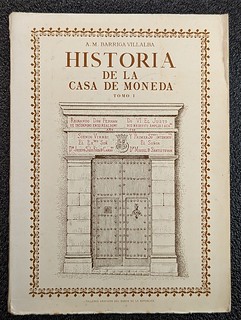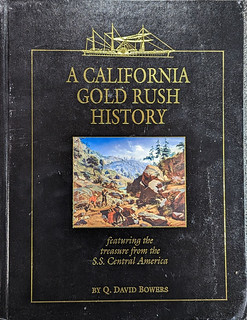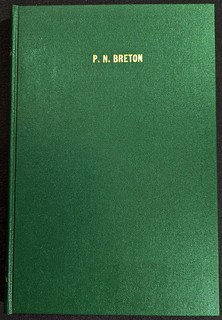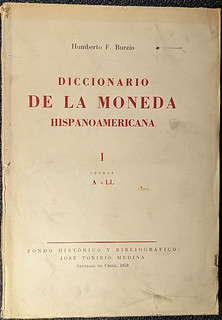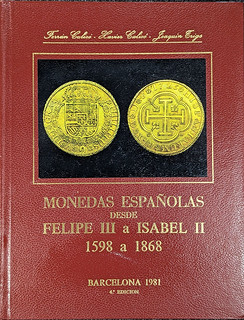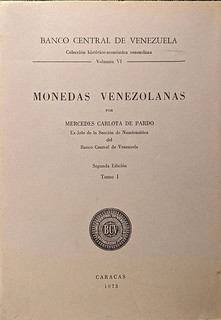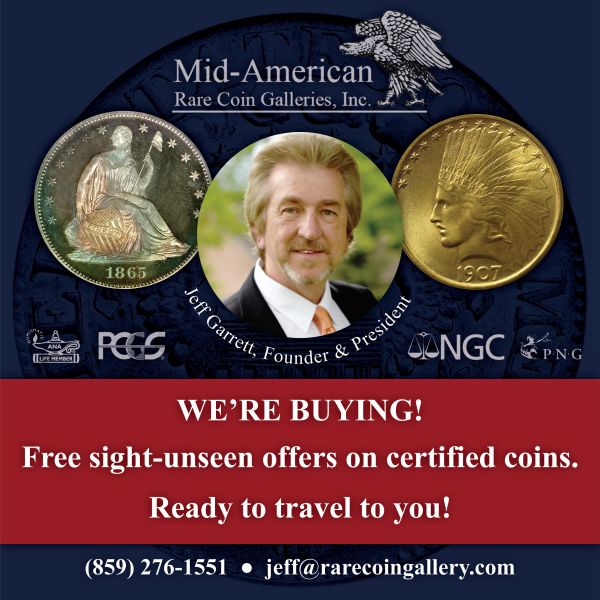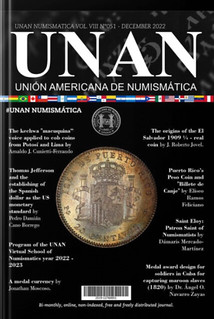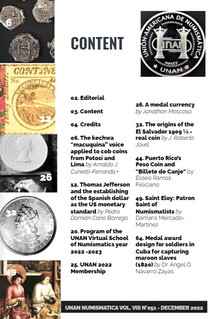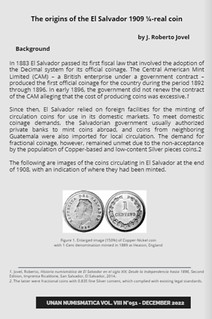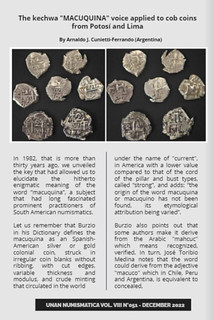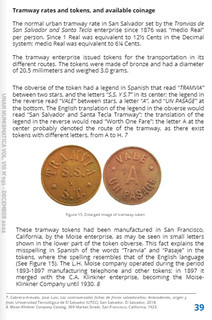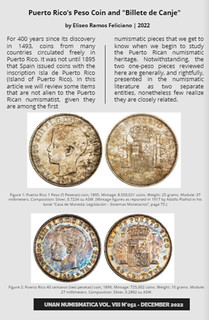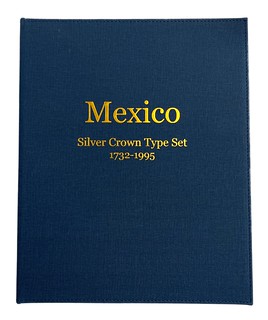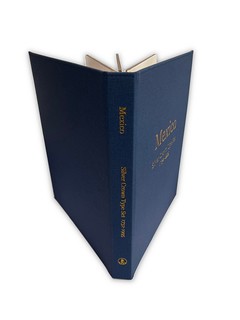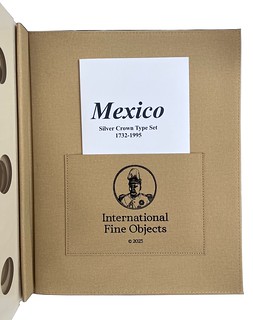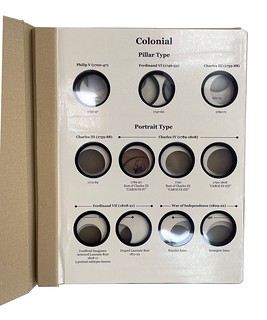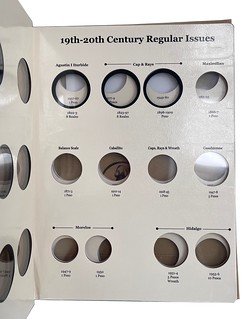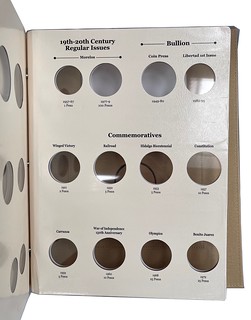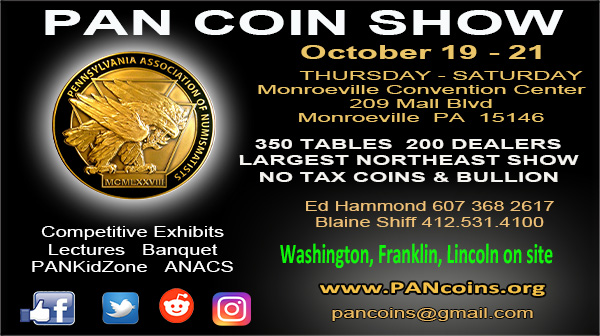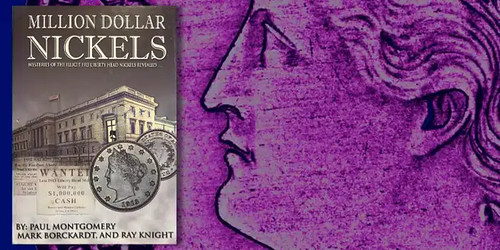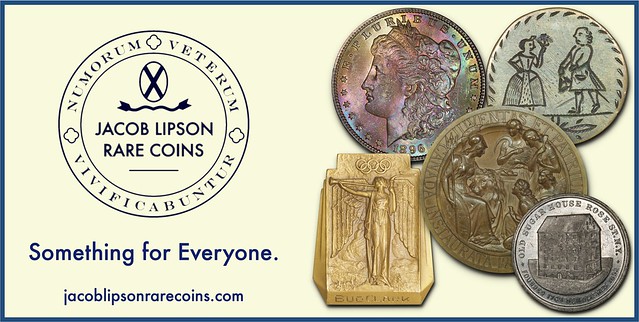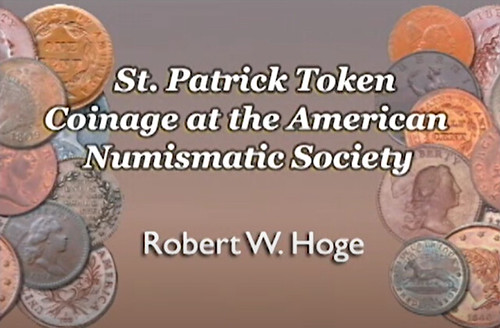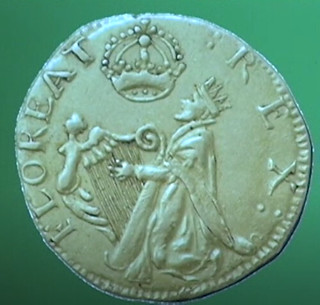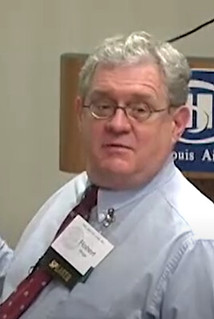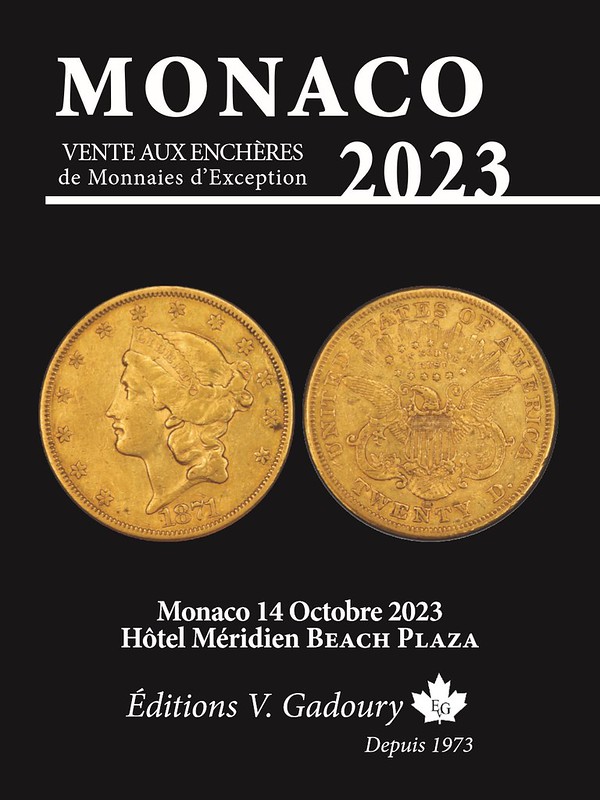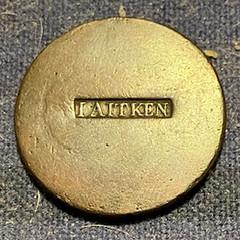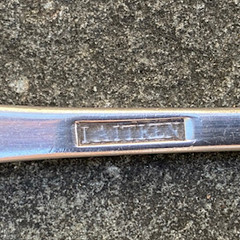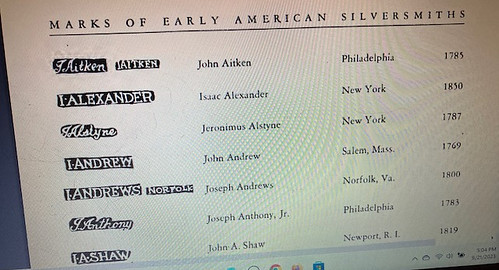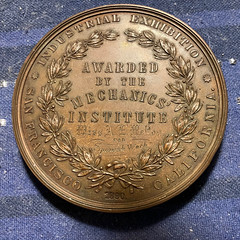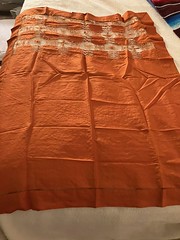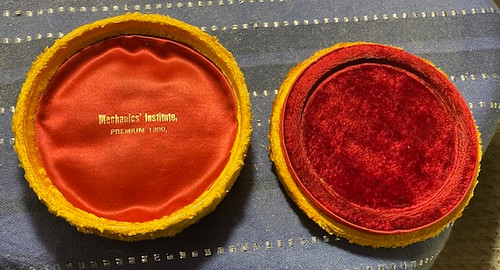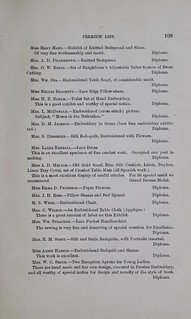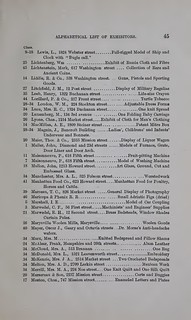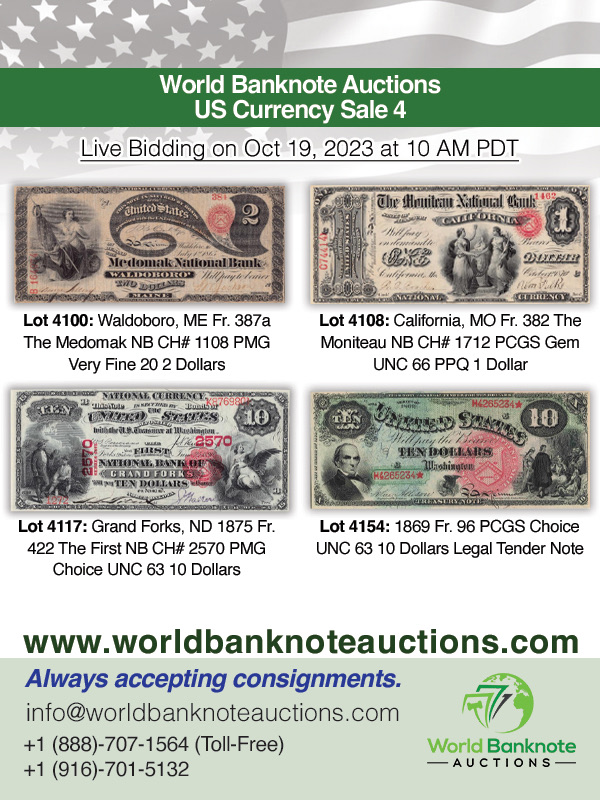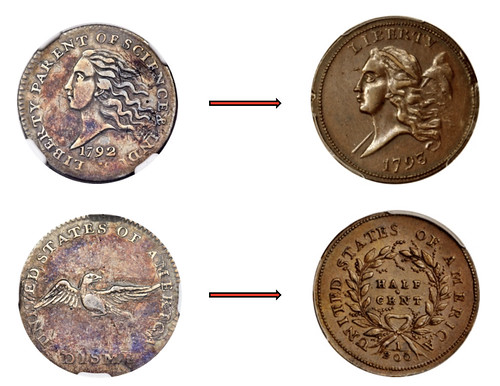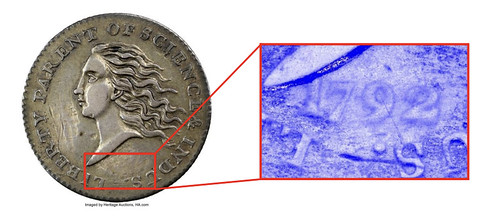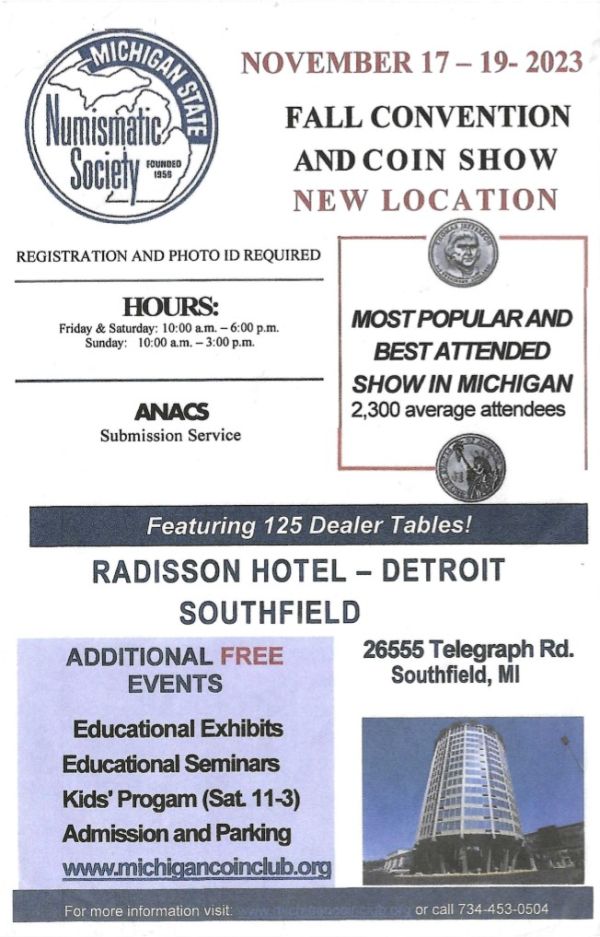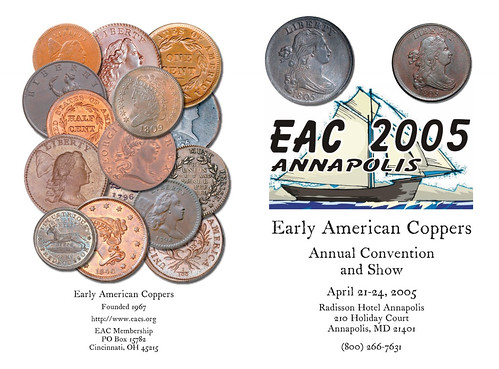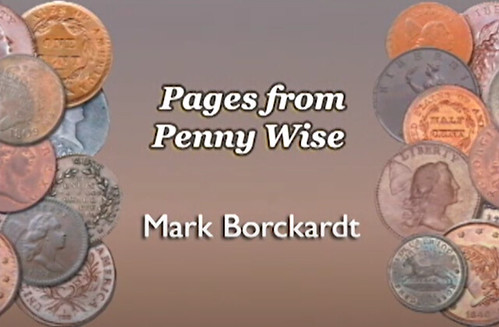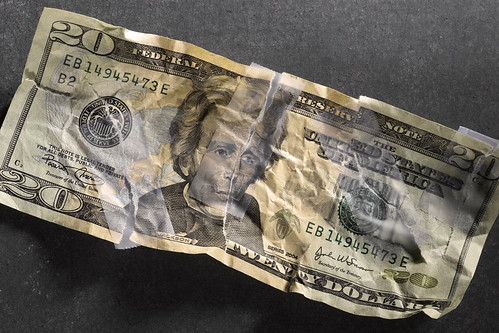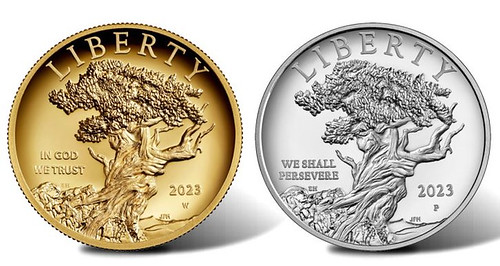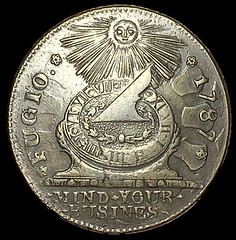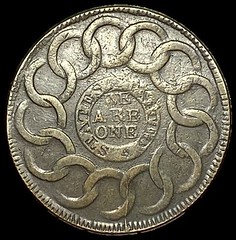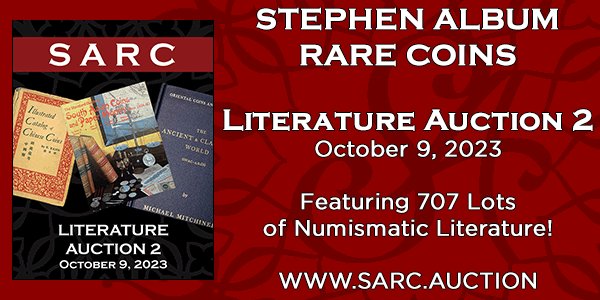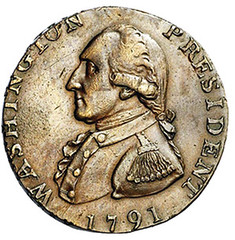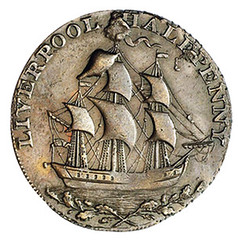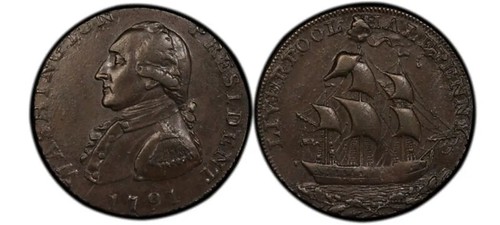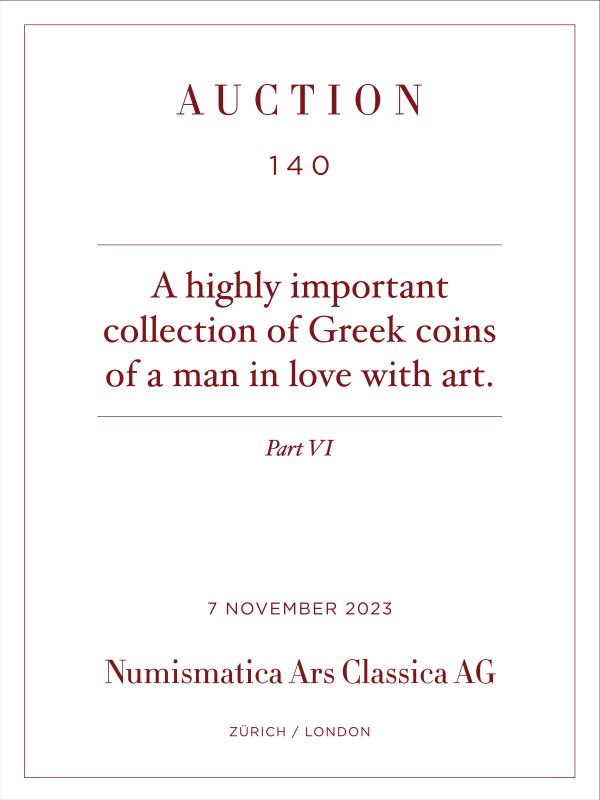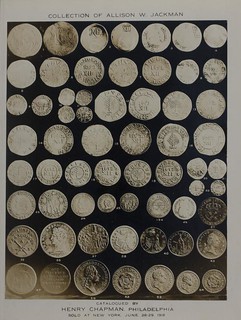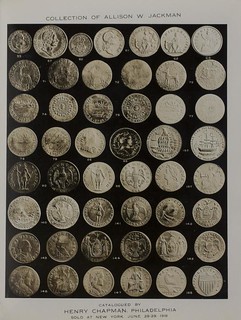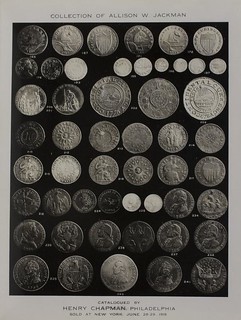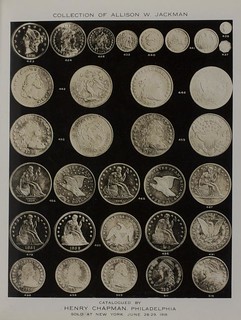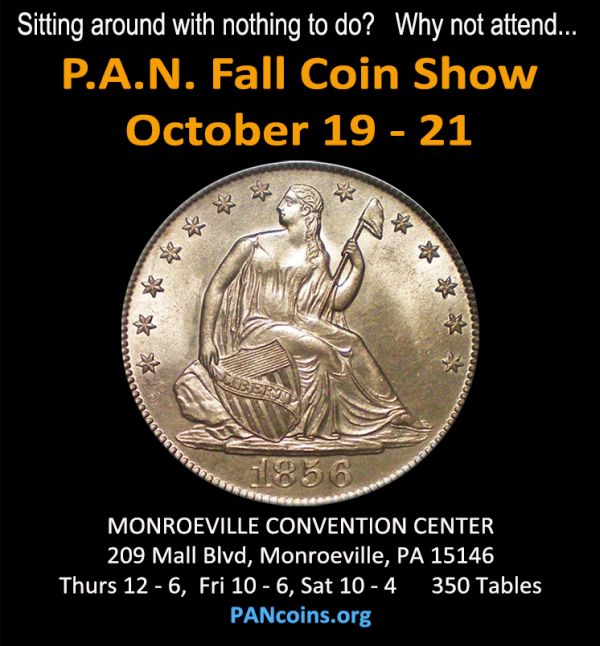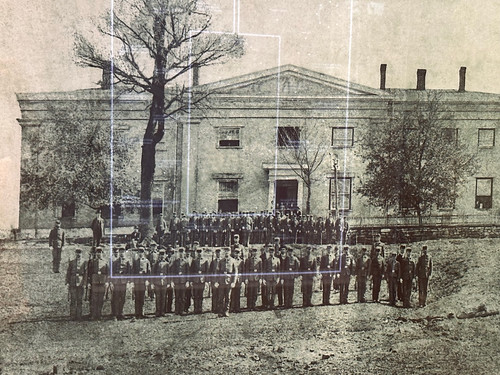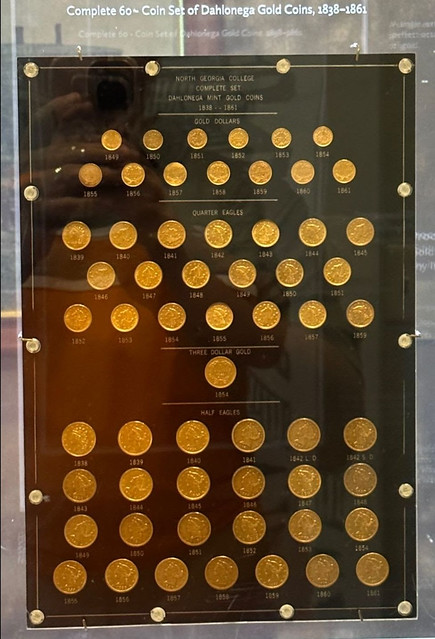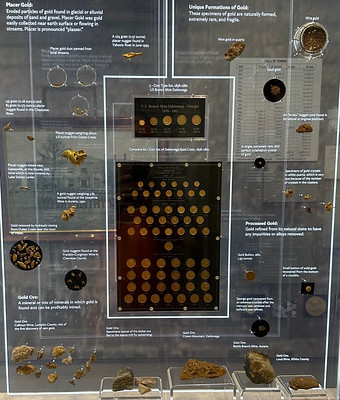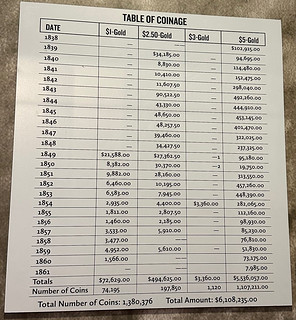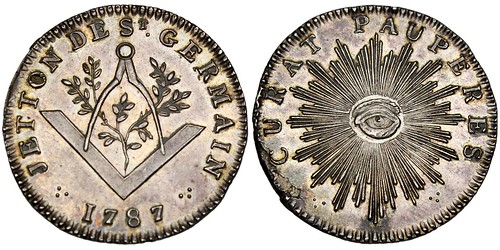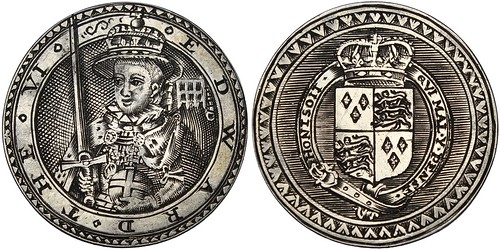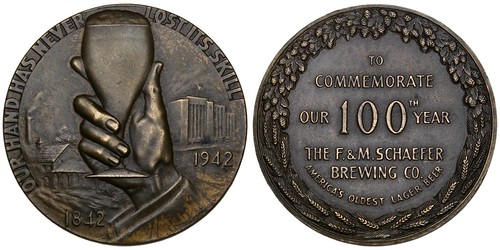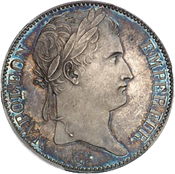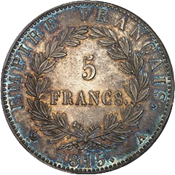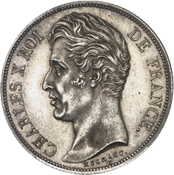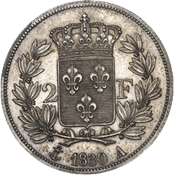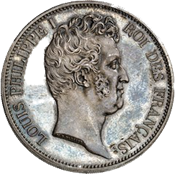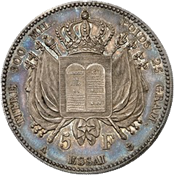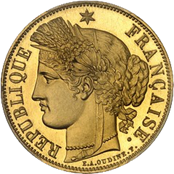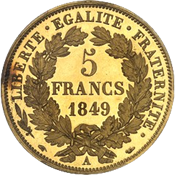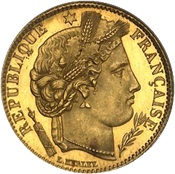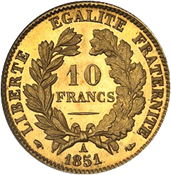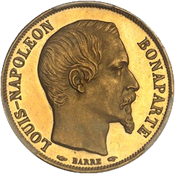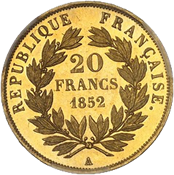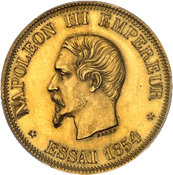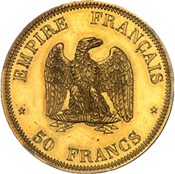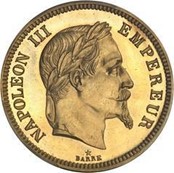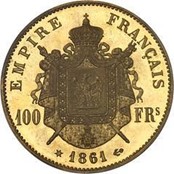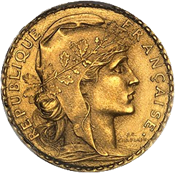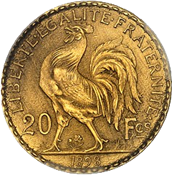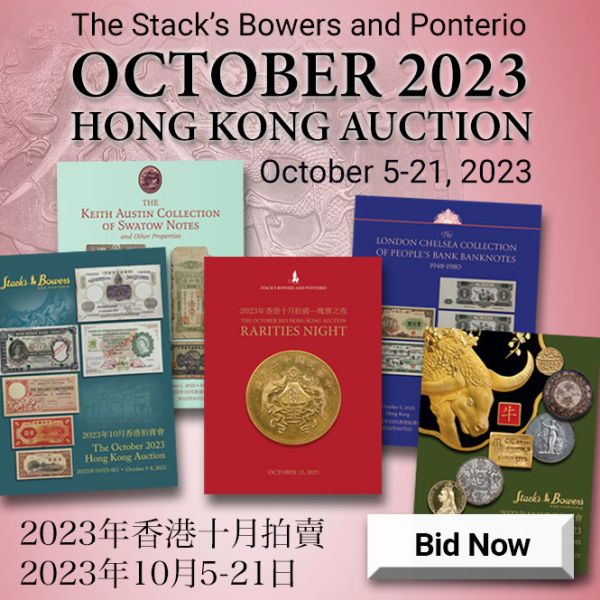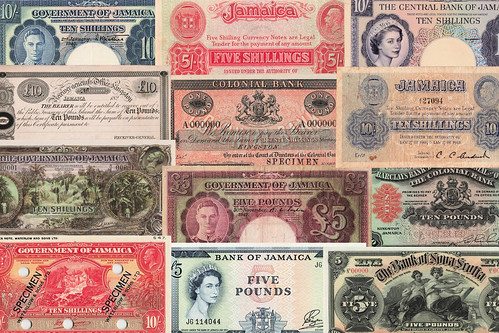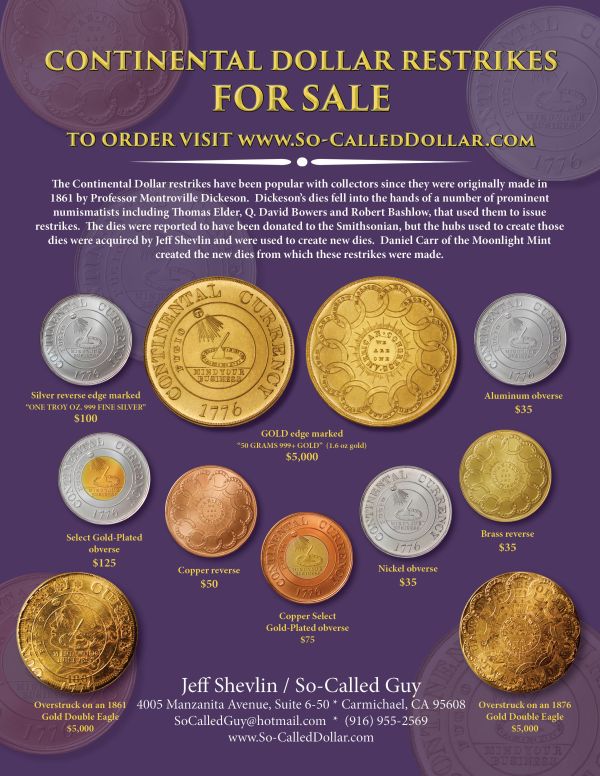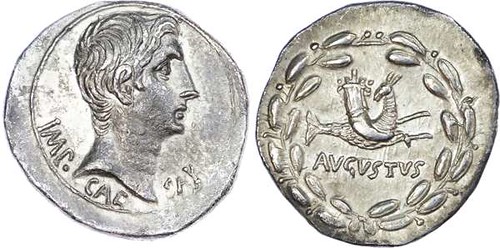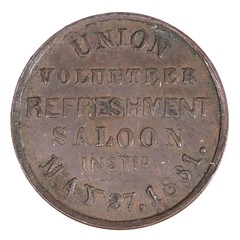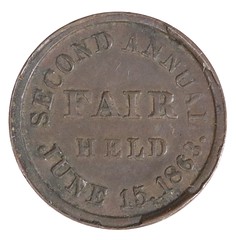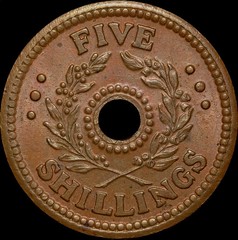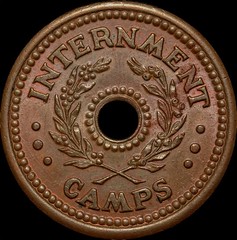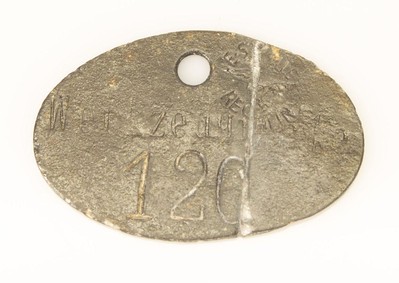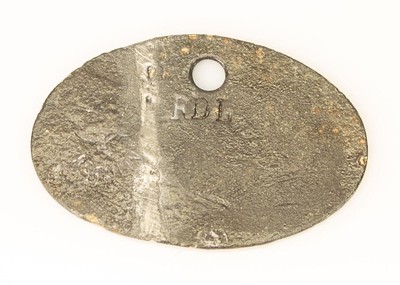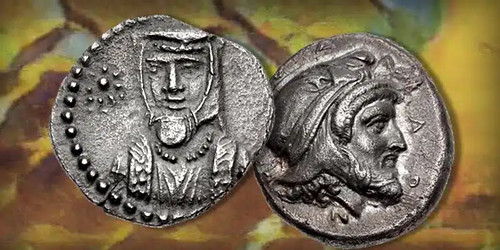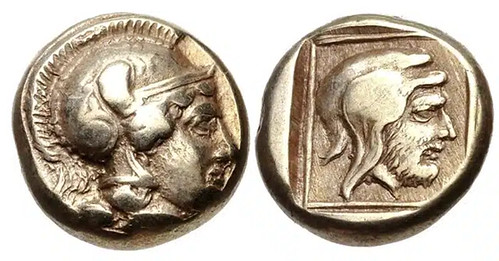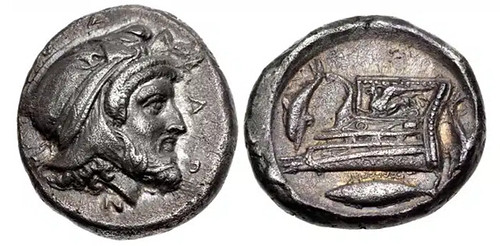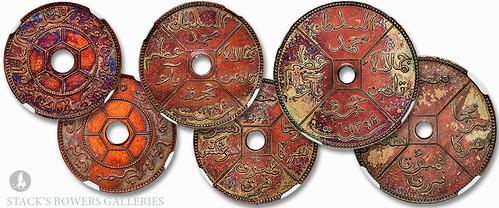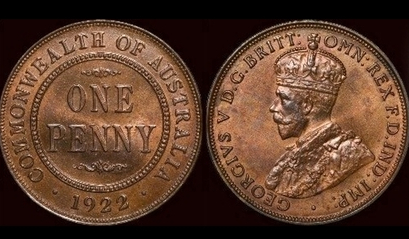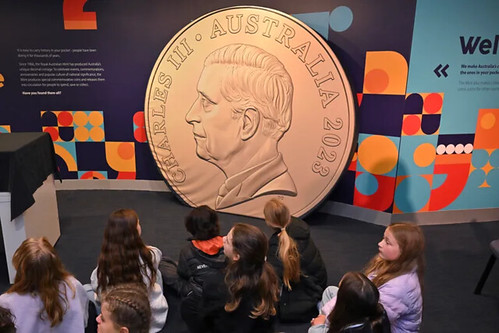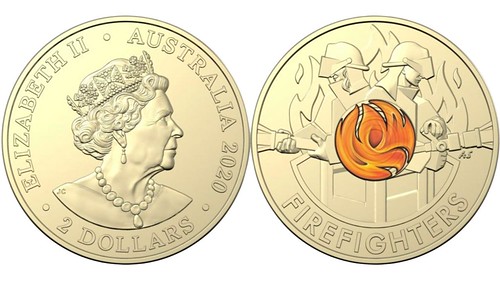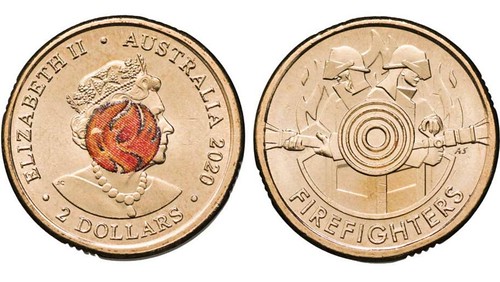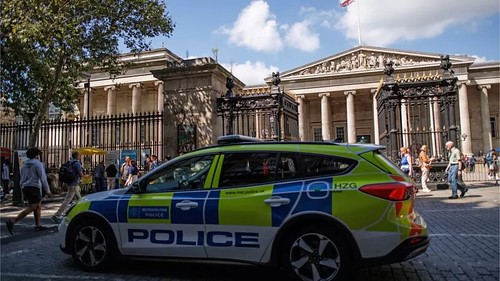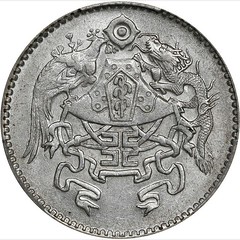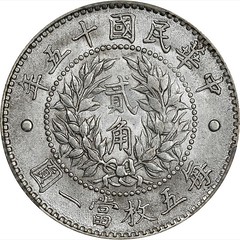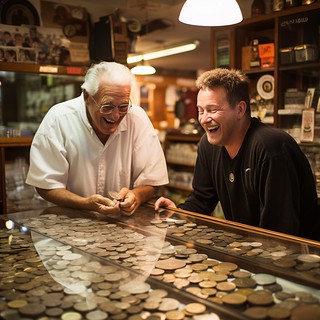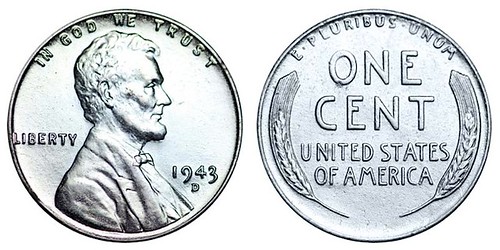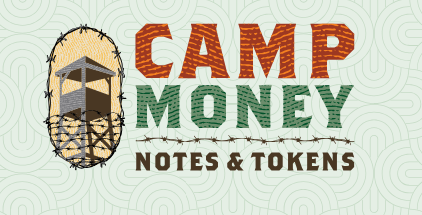
Visit our NBS Sponsors




About UsThe Numismatic Bibliomania Society is a non-profit association devoted to the study and enjoyment of numismatic literature. For more information please see our web site at coinbooks.org SubscriptionsThose wishing to become new E-Sylum subscribers (or wishing to Unsubscribe) can go to the following web page link MembershipThere is a membership application available on the web site Membership Application To join, print the application and return it with your check to the address printed on the application. Print/Digital membership is $40 to addresses in the U.S., and $60 elsewhere. A digital-only membership is available for $25. For those without web access, write to: Jeff Dickerson, Treasurer AsylumFor Asylum mailing address changes and other membership questions, contact Jeff at this email address: treasurer@coinbooks.org SubmissionsTo submit items for publication in The E-Sylum, write to the Editor at this address: whomren@gmail.com BUY THE BOOK BEFORE THE COIN |
- WAYNE'S WORDS: THE E-SYLUM OCTOBER 8, 2023
- STEPHEN ALBUM LITERATURE AUCTION 2 SELECTIONS
- WORKMAN BOOKS SALE 6 ANNOUNCED
- NEW BOOK: CORPUS OF MUGHAL COINS OF INDIA, VOL 1
- PERIODICAL: UNAN DECEMBER 2022
- NEW WORLD COIN ALBUM LINE LAUNCHED
- BOOK REVIEW: MILLION DOLLAR NICKELS
- NOVEMBER 2023 NNP SYMPOSIUM ANNOUNCED
- NEWMAN PORTAL ADDS PHILIPPINE EMERGENCY NOTES
- VIDEO: ST. PATRICK TOKEN COINAGE AT ANS
- RON GILLIO INTERVIEW, PART ONE
- THE NUMISMATIC PROOF SCALE
- SUBSURFACE METAL LATTICE COIN IMAGES
- NOTES FROM E-SYLUM READERS: OCTOBER 8, 2023
- LIBRARY COMPANY FRANKLIN EXHIBIT FEATURES MONEY
- FINANCIAL DOCUMENT EXHIBIT AT IMEX
- VOCABULARY TERM: OFF FLAN
- ALLISON W. JACKMAN
- THE DAHLONEGA GOLD MUSEUM
- NUMISMAGRAM MEDAL SELECTIONS: OCTOBER 8, 2023
- MDC OCTOBER 2023 FRENCH COLLECTION SELECTIONS
- WBNA OFFERS CHANG-MARSHALL JAMAICAN BANKNOTES
- NUMISMATIC NUGGETS: OCTOBER 8, 2023
- ANCIENT COINS OF THE PERSIAN GOVERNORS
- THE SULU PATTERNS OF BRITISH NORTH BORNEO
- THE 1922 AUSTRALIAN SPECIMEN PENNY
- KING CHARLES III TO APPEAR ON AUSTRALIAN COINS
- AUSTRALIA FIREFIGHTER COIN BULLSEYE ERROR
- BRITISH MUSEUM SEEKS RECOVERY OF STOLEN ITEMS
- FRENCH COUPLE SUES DEALER
- LOOSE CHANGE: OCTOBER 8, 2023
- FEATURED WEBSITE: CAMP MONEY NOTES
Content presented in The E-Sylum is not necessarily researched or independently fact-checked, and views expressed do not necessarily represent those of the Numismatic Bibliomania Society.
WAYNE'S WORDS: THE E-SYLUM OCTOBER 8, 2023
 New subscribers this week include:
Denny Polly.
Welcome aboard!
New subscribers this week include:
Denny Polly.
Welcome aboard!
Thank you for reading The E-Sylum. If you enjoy it, please send me the email addresses of friends you think may enjoy it as well and I'll send them a subscription. Contact me at whomren@gmail.com anytime regarding your subscription, or questions, comments or suggestions about our content.
This week we open with two numismatic literature sales, one new book, a new coin album, a book review, updates from the Newman Numismatic Portal, and more.
Other topics this week include Mughal coins of India, St. Patrick coinage, Allison Jackman, Ron Gillio, Paul Ehrlich, the numismatic proof scale, Ben Franklin's currency printing plates, IMEX, Dahlonega gold, Jamaican banknotes, Australian coins and errors, and camp money.
To learn more about small California and Territorial gold coins, Ferdinand II Tyrolean Thalers, 1913 Liberty Head nickels, Philippine Emergency Notes, subsurface metal lattice images, NumiStudy, the motto "We Shall Persevere", coins of the Persian Governors, a rather inappropriate bullseye symbol and a famous pneumismatist, read on. Have a great week, everyone!
Wayne Homren
Editor, The E-Sylum
STEPHEN ALBUM LITERATURE AUCTION 2 SELECTIONS
Stephen Album Rare Coins is holding their second numismatic literature auction on October 9, 2023. Here are some additional lot selections. -Editor
Lot 98: Burnie, R. H., Small California And Territorial Gold Coins: Quarter Dollars, Half Dollars, Dollars, First Edition, Pascagoula, 1955, 96 pages, softcover three-ring bound. Contains an introduction, a short essay called "Notes on the Small California Gold Coinage" and many descriptions of coin types.
Lot 106: Challis, M.A.S. and C.E. Blackburn, Studies in the coinages of Carausius and Allectus, British Numismatic Society, London, 1985, 50 pages including 5 plates, softcover, ex Libris Stephen Huston.
Lot 134: Credit Communal de Belgique, One Money for Europe, Credit Communal de Belgique, Brussels, 1991, 159 pages, softcover. Published in conjunction with an exhibit at the Credit Communal and the convening of the XIth International Numismatic Congress at the time of the introduction of the ECU as a potential single monetary unit for Europe. It is a series of short papers, the authors of which represent a who's who of European numismatics. The papers cover Greek before Athenian Owls, Attic Tetradrachm, Magna Graecia, Federal Coinage in Greece, Roman Denarius, Roman Empire in general, Celts, Solidus and Besant in Western Europe, Carolingian, Denier of Friesach as international trade coin, Luxembourg coinage, Scandinavia, Catalonian solution to International Monetary Union, Union of Elector of the Rhine Burgundy, Return to large coinage, the Sterling, The Ducat, the Florin, Royal French coinage, the Thaler, the Maria Teresa Thaler, the Sovereign, Germanal Franc and the Latin Union, German Zollverein, Currency, Resistance to and problems of a common currency, the ECU. Great maps, outstanding photos, ex James Farr Collection Library.
Lot 166: Dickinson, Michael, Seventeenth Century Tokens of the British Isles and their Values, Spink & Son Ltd, London, 2004 reprint (1986), 285 pages, 7 plates, hardcover with dust jacket. Catalog based on the earlier work of Williamson, with revisions, additions, and valuations. Catalog arranged by county with legends, descriptions, and denominations, and values in the grade of fine.
Lot 311: Karishkovskii, P. O., Moneti Ol'bii (Coins of Olbia), Akademiya Nauk Ukrainskoi SSR, Odesskii, Arkheologicheskii Muzei, Kiev, 1988, 166 pages, 8 plates, softcover. This is not a catalogue, but rather a detailed treatment of the monetary system of ancient Olbia on the Black Sea. There are many line drawings of coins in the book, including a few pages of dolphins of several types. A nice little book with better-than-usual photographic plates, as well as several pages showing inscriptions and monograms found on coins. Russian text.
Lot 366: Lux, Dr. Iván, Identification of Archduke Ferdinand II Tyrolean Thalers, Budapest 2017, 88 pages, hardcover, full listing with color images of 224 thaler versions in a logical system of 61 groups, easy and prompt identification of any Archduke Ferdinand Tyrolean thalers, two-step process: instant identifier for primary identification, and listing of all versions with images and circumscriptions for fine selection, rarity values estimated from current frequencies, mapping of previous identifications to the present one.
Lot 382: McGregor, G & H.H.P. Häberling, The Native Pass Tokens of German South West Africa, Windhoek, 52 pages, softcover, bilingual in English and German. This book provides an overview of the holed brass passses which natives were forced to carry after 1904 in the colony of German South West Africa. The operation of the pass token system is described in detail along with the depiction of the individual tokens. All districts in which pass tokens were used are listed together with the relevant serial numbers. The format of this book makes it convenient to use as a reference work for collectors of such tokens.
Lot 495: Ramsden, Henry A., Siamese Porcelain and Other Tokens, Yokohama, 1911, original printing, 37 pages, 20 colorized plates, softcover, most online copies of this book have black and white photographic plates whereas this original printing has high quality colorized plates, ex Dr. Axel Wahlstedt Library.
NOTES:
- WE WILL NOT COMBINE BOOK PURCHASES WITH COIN PURCHASES.
- WE WILL NOT EXPEDITE BOOK PURCHASES.
- SHIPPING FEES WITHIN THE USA ARE INEXPENSIVE (USPS MEDIA MAIL).
- INTERNATIONAL SHIPPING FEES WILL BE VERY EXPENSIVE. PLEASE CONTACT US FOR SHIPPING QUOTES PRIOR TO BIDDING.
- THESE BOOKS ARE BEING SOLD BY SPECIAL ARRANGEMENT. WE ARE NOT ACTIVELY SEEKING CONSIGNMENTS OF NUMISMATIC LITERATURE.
To view the lot descriptions or bid, see:
https://www.sarc.auction/Literature-Auction-2_as93427
To read the earlier E-Sylum article, see:
STEPHEN ALBUM LITERATURE AUCTION 2
(https://www.coinbooks.org/v26/esylum_v26n39a03.html)
WORKMAN BOOKS SALE 6 ANNOUNCED
Alan Workman has a numismatic literature sale closing November 11-12, 2023. Here's the announcement and some selected lots. -Editor
Workman's Books is conducting its Sixth sale, "Sale 6 - Selections from A Latin American Numismatic Library and other Consignments.". Accompanying the Latin American Numismatic Library is a sizeable consignment of books, catalogs, magazines, journals, and dealer fixed price lists on numismatics, orders & decorations, militaria, shipwrecks, sunken treasure, lost treasure, treasure hunting, lost mines, and treasure in the American West.
SESSION 1:
- Books: 1 to 467
- Auction Catalogs & Dealer Fixed Pricelists: 468 to 734
SESSION 2:
- Auction Catalogs & Dealer Fixed Pricelists: 735 to 1267
- Journals & Magazines: 1268 to 1345
- Posters: 1346
- Newspapers: Lot 1347
- Photos: 1348 to 1349
- Postcards: 1350 to 1351
- VHS Tapes: 1352 to 1354
- DVDs: 1355
Lot 1: Adams, Edgar H. (Ed.). THE JULIUS GUTTAG COLLECTION OF LATIN AMERICAN COINS. Quarterman Publications, Lawrence. 1974. 8vo. 527 pages. Original green cloth, lettered in silver, jacket. b&w coin photos throughout. Jacket edges worn and chipped, Very Good. Book Fine. This book is a catalog of the Julius Guttag Collection of Latin American coins. The collection comprises the coinage of Mexico, Central America, South America and the West Indies. Many colonial cob, pillar and portrait issues as well as Republic issues are included. The countries are listed alphabetically and the coins are presented in chronological order by date and then by variety. A Review and Comments section at the end attempts to correct typos and identify dubious or impossible specimens presented in the original edition. Lot weight: 2 lbs 5oz. Subject(s): Spanish American Coinage.
Lot 5: Alfaro Asins, Carmen (Ed.). DINERO EXOTICO. UNA NUEVA COLECCION DEL MUSEO ARQUEOLOGICO NACIONAL. Museo Arqueologico Nacional, Madrid. 2001. 4to. 95 pages. Original pictorial card covers. color coin, historic prints, antiquities and historic photos throughout. Fine. This well-illustrated book is a catalog of a new collection of strange and curious monies acquired by the Museo Arqueologico Nacional in Madrid. Lot weight: 1 lbs 0oz. Subject(s): World Currency.
Lot 20: Barriga-Villalba, A.M. HISTORIA DE LA CASA DE MONEDA. TOMAS STOHR'S PERSONAL COPY. Banco de la Republica Archivo de la Economia Nacional, Bogota. 1969. 8vo. 370, (2); 329, (3); 572, (2) pages. Matching original pictorial card covers. Three Volumes, complete. Inscribed to author Tomas Stohr by the author in Volume I. Volumes II & III signed by author. Tables. Fold-out chart. b&w historical, document, print and coin photos throughout. spines sun-faded, worn. Spanish text. Very Good. This book is the premier reference on the archival information of the Colombian mints. Volume I primarily covers the cob coinage, Volume II primarily covers the milled colonial coinage, and Volume III primarily covers the milled Republic and later coinage. Each volume contains numerous example coin photos and photos of early archival documentation. Lot weight: 4 lbs 9oz. Subject(s): Colombian Coinage.
Lot 32: Bowers, Q. David. A CALIFORNIA GOLD RUSH HISTORY. FEATURING THE TREASURE FROM THE S.S. CENTRAL AMERICA. California Gold Marketing Group, Newport Beach. 2002. fo. 1055, (1) pages. Original black leatherette, gilt, color print central device. Signed by the author; Columbus-America Discovery Group Founder, Tommy Thompson; Chief Scientific Researcher, Bob Evans; and California Gold Marketing Group, Dwight Manley. 73 color gold ingot plates. b&w and color historic, engraving, map, document and coin photos throughout. Fine. This comprehensive book covers just about every topic related to the California gold rush of 1849, including the discovery of gold at Sutters Mill, migrations to California, mining operations, mints and coins, and the transport of gold from the west coast of America to the east coast. The book also includes the story of the sinking of the 'SS Central America' in 1857 and the subsequent salvage in the1990s by the Columbus-America Discovery Group. Many of the gold bars and coins salvaged from the wreck are illustrated and described. Rare Tommy Thompson signature. Lot weight: 11 lbs 4oz. Subject(s): Sunken Treasure, United States History.
Lot 36: Breton, P.N. POPULAR ILLUSTRATED GUIDE TO CANADIAN COINS, MEDALS, &. &./GUIDE POPULAIRE ILLUSTRE DES MONNAIES ET MEDAILLES CANADIENNES, ETC. ETC. P.N. Breton, Montreal. 1912. 8vo. 195, (1) pages. Later green cloth, gilt, original card covers bound in. Text line illustrations and portraits. Fine. This book is a general book on Canadian numismatics and presents text line illustrations and an approximate commercial value of each coin and medal. It includes many pages of coin and medal illustrations and an annexed table at the end giving the prices paid by Breton. Lot weight: 1 lbs 7oz. Subject(s): Canadian Coinage, Medals.
Lot 47: Burzio, Humberto F. DICCIONARIO DE LA MONEDA HISPANOAMERICANA. Fondo Historico Y Bibliografico, Santiago. 1956-1958. 4to. xix, (1), 327, (3); 453, (5); (6) pages. Original matching tan printed card covers. Three volumes complete: Volumes I (A a LL), II (M a Z), & Laminas. 116 b&w coin plates. Very Good. A very useful work and a true inventory of the state of Spanish-American numismatics at the time of its printing. It is an exhaustive study of the Spanish-American coinage conveniently arranged in alphabetical order by entries. Lot weight: 6 lbs 7oz. Subject(s): Spanish American Coinage.
Lot 51: Calico, Ferran & Xavier Calico & Joaquin Trigo. MONEDAS ESPANOLAS DESDE FELIPE III A ISABEL II 1598-1868. Gabinete Numismatico Calico, Barcelona. 1981. 4to. 438, (2) pages. Original maroon leatherette, photo plate device, gilt. Fourth Edition. b&w coin photos throughout. Spanish text. Fine. This book is a comprehensive illustrated catalog and price guide to the gold, silver, and copper coinage of the various monarchs and mints in Spain and Spanish America from 1598 to 1868. Lot weight: 3 lbs 3oz. Subject(s): Spanish, Spanish American Coinage.
Lot 59: Carlota de Pardo, Mercedes. MONEDAS VENEZOLANAS. Banco Central de Venezuela, Caracas. 1973. 8vo. 290, (2); 488, (22) pages. Original printed card covers. Two volumes: Coleccion Historico-Economica Venezolana: Volumen VI & VII. Second Edition. 135 b&w and color coin plates. b&w coin and currency photos throughout appendices. 28 charts. 269 transcribed documents. errata sheet laid in. Spanish text. Fine. This book presents the history of the Venezuelan currency from 1802 to 1986. The first volume is a thorough study of the coin, with abundant plates, and the second volume is a compilation of laws, decrees and provisions on Venezuelan coins. Lot weight: 3 lbs 8oz. Subject(s): Venezuelan Coinage, Paper Money.
To go to the sale, see:
Selections from A Latin American Numismatic Library and other Consignments Sale 6
(https://www.icollector.com/Selections-from-A-Latin-American-Numismatic-Library-and-other-Consignments-Sale-6_as91196)
To visit the website:
https://workmansbooks.square.site/
NEW BOOK: CORPUS OF MUGHAL COINS OF INDIA, VOL 1
Volume 1 in a series of books on the Mughal Coins of India has been published. -Editor
Corpus of Mughal Coins of India, Volume 1: Silver & Gold Coins in the names of Babur, Humayun, Kamran and Akbar 1526-1605
Nilesh Gada (Author)
Dilip Rajgor (Author)
Legacy of India
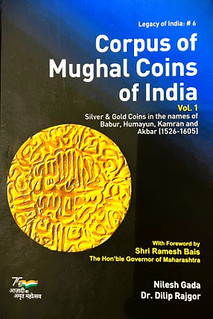 The Corpus of Mughal Coins of India is a series of six volumes. The Corpus deals with all the coins issued by the Mughal Emperors within modern countries of India, Pakistan, Afghanistan, Uzbekistan, Nepal & Bangladesh. These coins include not only all the coins issued by the Mughal Emperors, but also all the coins issued by provincial rulers in the name and style of these Mughal Emperors. These include Independent Kingdoms, Princely States and East India Company. Catalogue of Mughal coins is classified as per chronology of Mughal Emperors. Each volume of the present series includes several rulers and their respective coins. A table of the classification of all the coins of these Mughal coins is appended hereunder.
The Corpus of Mughal Coins of India is a series of six volumes. The Corpus deals with all the coins issued by the Mughal Emperors within modern countries of India, Pakistan, Afghanistan, Uzbekistan, Nepal & Bangladesh. These coins include not only all the coins issued by the Mughal Emperors, but also all the coins issued by provincial rulers in the name and style of these Mughal Emperors. These include Independent Kingdoms, Princely States and East India Company. Catalogue of Mughal coins is classified as per chronology of Mughal Emperors. Each volume of the present series includes several rulers and their respective coins. A table of the classification of all the coins of these Mughal coins is appended hereunder.
Within each ruler, coins of that ruler are arranged as per metal: silver coins are followed by gold coins. Within each metal, coins are arranged as per distinguished types or series, for example Kalima type. or Kalima on Circular coins and Kalima on Square coins and the like. Within each Type or a Series, coins are arranged alphabetically as per their mint names. Furthermore, within each Mint, coins of those Mints are arranged as per sub-types or sub-series. For example, within coins of Akbar, coins are arranged as per following order:
Kalima on Square Coins ➡ Silver Coins ➡ Ahmedabad Mint without Mint Epithet (GR# 4.148) = Ahmedabad Mint with Mint Epithet (GR# 4.149)
Moreover, within each Series, Type, Variety or Sub-variety, known denominations of that variety are listed. These are also appended with years of minting on those varieties.
However, the years given for each variety are of two types: In case where the given years of issue are corroborated by verification of actual coins, such years are grouped under the heading. "Years Known". On the contrary, for a few years of issue which are recorded in published in articles or books, but they are not personally verified by the authors, in such a case, such Years of Issue are grouped under the heading. "Years Reported",
For more information, or to order, see:
Corpus of Mughal Coins of India, Volume 1: Silver & Gold Coins in the names of Babur, Humayun, Kamran and Akbar 1526-1605
(https://www.bagchee.com/books/BB137893/corpus-of-mughal-coins-of-india-volume-1-silver-gold-coins-in-the-names-of-babur-humayun-kamran-and-akbar-15261605)
THE BOOK BAZARRE
PERIODICAL: UNAN DECEMBER 2022
The December 2022 issue of UNAN from the Union Americana de Numismatica (American Numismatic Union) has been published. -Editor
To read the complete issue, see:
https://read.bookcreator.com/
PvBvPIQj8AOe1BtTYGMfP1nqrh83/NTSBcRB1T3miUtZbsAbx0w
NEW WORLD COIN ALBUM LINE LAUNCHED
International Fine Objects has launched a new range of coin albums, starting with one for Mexican Crowns. It's great to see a new entrant in this important niche of numismatic publishing. -Editor
International Fine Objects presents - World Coin Albums! After decades out of print, we are now manufacturing coin albums for collectors. The first available is a Silver Crown Type Set of Mexico, featuring many innovations:
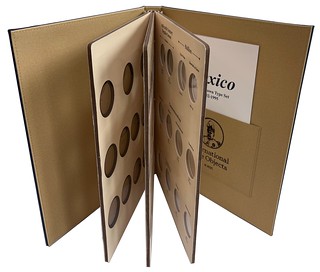
- Slots for 35 different type crowns from from 1732 to 1995
- Safe EVF foam gaskets for irregularly sized colonial 8 reales and republic pesos
- A beautiful, hardcover, two-tone blue/cream cloth-bound folder with gold lettering
- Archival-safe, acid-free, PVC-free construction
- Pocket with logbook full of background history and checkboxes for the collector to record provenance
Available at $69 shipped within the USA, orders to: sales@ifobjects.com.
A video is available here: https://www.youtube.com/watch?v=a2dXtjY-Zs0
More photos available here: https://www.ifobjects.com/world_coin_albums
BOOK REVIEW: MILLION DOLLAR NICKELS
CoinWeek published a review of the 2005 book Million Dollar Nickels by Paul Montgomery, Mark Borckardt and Ray Knight. Here's an excerpt - see the complete article online for more. -Editor
The 1913 Liberty Head nickel is one of the most valuable and famous of all United States coins. Produced in secrecy and without official authorization in either late 1912 or early 1913, the coin is the last to bear the Liberty Head design created by United States Mint Chief Engraver Charles Barber design. Coin collectors became aware of its existence in 1919 when Mint employee Samuel Brown showed the nickels at a Chicago Coin Club meeting. Shortly before doing this, Brown had placed an ad in The Numismatist claiming that he was willing to pay $500 each for 1913 nickels. This was an enormous sum for a civil servant at the time but the ruse worked, and all five nickels were purchased by Colonel E.H.R. Green.
To learn more about the history and allure of the nickel than you will anywhere else, CoinWeek recommends that you read the book Million Dollar Nickels: Mysteries of the Illicit 1913 Liberty Head Nickels Revealed… (Zyrus Press, 2005) by numismatists Paul Montgomery and Mark Borckardt and researcher Ray Knight. The book is out of print but not difficult to source. It covers the various origin theories of the coin–all of which contain some degree of exaggeration and mythmaking–and tracks the coins through 80 years of private ownership. The book culminates in the re-discovery of the Walton nickel in 2003.
To read the complete article, see:
Million Dollar Nickels Is an Essential Read
(https://coinweek.com/million-dollar-nickels-is-an-essential-read/)
To read an earlier E-Sylum article, see:
BOOK REVIEW: MILLION DOLLAR NICKELS
(https://www.coinbooks.org/esylum_v09n19a08.html)
NOVEMBER 2023 NNP SYMPOSIUM ANNOUNCED
The NNP Symposia are highlights of the numismatic year, bringing great speakers direct to you via Zoom. Be sure to plan for the next one. Here's the announcement. -Editor
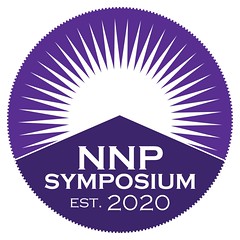 The Newman Numismatic Portal today announces the next NNP Symposium, which
will take place November 2-4. This is a free, online event that brings together a variety of numismatic
speakers and covers a wide array of numismatic subjects. Featuring approximately 30 presentations,
attendees will easily find topics of interest. This is the seventh such event, which was launched in fall
2020 in response to the pandemic.
The Newman Numismatic Portal today announces the next NNP Symposium, which
will take place November 2-4. This is a free, online event that brings together a variety of numismatic
speakers and covers a wide array of numismatic subjects. Featuring approximately 30 presentations,
attendees will easily find topics of interest. This is the seventh such event, which was launched in fall
2020 in response to the pandemic.
In the area of U.S. numismatics, our feature presentation will cover U.S. material in the cabinet of the American Numismatic Association (ANA). Beginning with the 1804 dollar and 1913 Liberty nickel, the ANA collection includes important items in multiple areas of U.S. numismatics. Doug Mudd, the ANA Curator, will be on hand to answer audience questions following this presentation.
Among other presentations, Dror Goldberg of the Open University of Israel will speak on his recently published book, Easy Money: American Puritans and the Invention of Modern Currency. Katie Ameku, Ray Feller, and Steve Feller will present on Japanese-American relocation center monies of World War II, providing a numismatic lens on internment camps of the period. Lianna Spurrier, who produces the NNP Symposium on behalf of the Newman Numismatic Portal, will speak on Japanese bar money issued from 1599-1869. Presentation slots remain open, and interested speakers are encouraged to contact the NNP Symposium at https://nnpsymposium.org/for-presenters.
NNP Symposium attendees may sign up for emails at https://nnpsymposium.org, and a full schedule of events will be posted at https://nnpsymposium.org/schedule. Zoom links for individual sessions will be publicly posted shortly before the event. Registration is not required to attend the Symposium, though joining the email list is encouraged for those who wish to receive event notifications.
NEWMAN PORTAL ADDS PHILIPPINE EMERGENCY NOTES
The latest addition to the Newman Numismatic Portal is the first edition of Philippine Emergency Notes by Ken Berger. Project Coordinator Len Augsburger provided the following report. -Editor
Newman Portal Adds Philippine Emergency Notes
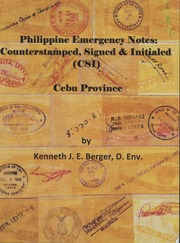 Through the courtesy of author Kenneth J. E. Berger, the first (2016) edition of the volume Philippine Emergency Notes : Counterstamped, Signed & Initialed (CSI) Cebu Province is available on Newman Portal. Following the December 1941 Japanese attacks on Hawaii and the Philippines, increased government expenditures and public hoarding created a need for emergency money, which was authorized by the Philippine government in late 1941. Berger's work focuses on the counterstamped, signed, and initialed notes issued by the Philippine Central Bank in the Cebu region. An addendum to the work, also available on Newman Portal, supplies color illustrations of many of the Cebu notes.
Through the courtesy of author Kenneth J. E. Berger, the first (2016) edition of the volume Philippine Emergency Notes : Counterstamped, Signed & Initialed (CSI) Cebu Province is available on Newman Portal. Following the December 1941 Japanese attacks on Hawaii and the Philippines, increased government expenditures and public hoarding created a need for emergency money, which was authorized by the Philippine government in late 1941. Berger's work focuses on the counterstamped, signed, and initialed notes issued by the Philippine Central Bank in the Cebu region. An addendum to the work, also available on Newman Portal, supplies color illustrations of many of the Cebu notes.
Link to Philippine Emergency Notes : Counterstamped, Signed & Initialed (CSI) Cebu Province on Newman Portal:
https://nnp.wustl.edu/library/book/632256
Link to Addendum to Philippine Emergency Notes:
https://nnp.wustl.edu/library/book/629595
VIDEO: ST. PATRICK TOKEN COINAGE AT ANS
The David Lisot Video Library on the Newman Numismatic Portal can be found at:
https://nnp.wustl.edu/library/multimediadetail/522852
We highlight one of his videos each week in The E-Sylum. Here's one from 2007 where ANS Curator Robert Hoge talks about St. Patrick tokens. -Editor
Curator from the American Numismatic Society, Robert W. Hoge, delivers this special presentation about the intriguing issues of the St. Patrick tokens of the late 17th century. The sale of the John Ford Collection brought some higher quality specimens on the market making this lecture with slides very timely about a little understood but highly desirable area of numismatics. Speaker(s): Robert W. Hoge.
To watch the complete video, see:
https://nnp.wustl.edu/library/book/560167
RON GILLIO INTERVIEW, PART ONE
Greg Bennick's latest interview for the Newman Numismatic Portal is with longtime dealer Ron Gillio.
Ron talked about his history in the coin hobby, his experiences traveling overseas to purchase gold coins, the early days of the Long Beach coin show, and interesting topics such as the American Institute of Professional Numismatists
that he started with Walter Breen.
Here's the first of five parts, where Ron talks about his start in collecting. -Editor
GREG BENNICK: Hi, everybody. My name is Greg Bennick. I'm with the Newman Numismatic Portal, and this is yet another in a series of interviews with numismatists from a wide range of backgrounds. And today I'm with Ron Gillio, and we're going to be talking about his career, his background, and how he got his start in numismatics. And I'm really excited for this conversation. Ron, hi, how are you today?
RON GILLIO: Greg, I'm fine. This is a great opportunity to tell my story, and thanks for contacting me, and I'm very excited about doing this with you.
GREG BENNICK: I'm so glad. And for viewers, Ron has been very patient. We actually set this up two weeks ago, and just as we started the interview, my laptop died. And when I say died, I don't mean that the battery went out. I mean, like into Apple for serious repairs and the whole nine yards. So, Ron has been most patient and most gracious. And Ron, I really appreciate that. Thank you so much.
RON GILLIO: No problem.
GREG BENNICK: Great. Well, tell me, how did you get your start in the hobby? What got you interested in coins?
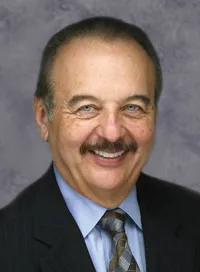 RON GILLIO: Well, it goes back to 1959. In 1959, I was at a movie theater in line.
I bought my ticket, I got change. And when I looked at my change, there were some
really shiny pennies in my change. And I had been looking at coins. I was always
interested in kind of looking at coins. And I noticed that it was different from some
of the other older pennies that were in the same change I got. Of course, it was the
new Lincoln Memorial penny. And I was very curious about it. I lived at the time in
the San Fernando Valley in Sherman Oaks, California.
RON GILLIO: Well, it goes back to 1959. In 1959, I was at a movie theater in line.
I bought my ticket, I got change. And when I looked at my change, there were some
really shiny pennies in my change. And I had been looking at coins. I was always
interested in kind of looking at coins. And I noticed that it was different from some
of the other older pennies that were in the same change I got. Of course, it was the
new Lincoln Memorial penny. And I was very curious about it. I lived at the time in
the San Fernando Valley in Sherman Oaks, California.
And there was a coin dealer I found just around the corner almost from the theater,
Bert Doling. And he was kind of my mentor that I went and talked to him. And he
said, Yes, it's a new penny, you should buy some of these and keep them.
So, I
bought two rolls of 1959 Philadelphia pennies. He said, You get the Denvers at the
bank, but these are better so get the Philadelphia's.
And that's what kind of got me
started.
And what got me really started, he told me, he said, If you're interested in older
coins, you should go to the bank and get rolls of pennies. You can go through them
and find older coins like in the teens.
He said, If you find pennies with the San
Francisco mint mark, the S mint mark, 1909 to 1915,
the minimum he would pay
me is 25 cents apiece. And you know, kid at 14 years old thinking, Well, that's a
great deal.
So, that's what got me started.
GREG BENNICK: That's amazing. That's fantastic. Now, okay. So, you get started buying two rolls of pennies, you are immediately business-minded in terms of your approach to the hobby. How did that develop from there? You know, some people start with pennies and they're just putting pennies in albums forever, but you immediately got an offer to make a profit on selling these coins. So, how did that develop from there early on?
RON GILLIO: Well, what I did is I bought a blue Whitman album and he actually
gave me one. He said, Try to fill this.
And I tried to fill that at the same time,
finding the extra and selling to him. And I had to buy some from him that I couldn't
find. And I continued collecting pennies in 1959, 1960 and I inherited some money
from my grandfather in Rochester, New York, where I was from. And it was $2,000
and that was a lot of money to me at that time.
So, what I did is I bought some 1960 pennies from Bert and I ordered some 1960
proof sets. Proof sets were $2.10 at the time. And I was very fortunate because they
turned out to be small dates. So, then I learned something new that here there's a
variety. And I took the rolls I bought from Bert for a dollar and a half back and he
gave me $150 a roll for them. And so, that got me more interested as more than just
a collector that this is something that maybe I can do and make money on. So, I
started very young thinking I could buy and sell coins.
Then the next thing I got into when I had a little bit more money going in 1961,
1962, I started collecting two cent [pieces] and three cent nickels. And I had old
Whate Raymond holders that I put the coins in and I was buying them. And in those
days, you could buy uncirculated two cent pieces, three cent pieces for $10 to $15 a
piece. So, I tried to get real nice ones. And so, that kind of got me started in the next
kind of series in 1961, 1962 with the two cent pieces and three cent pieces.
GREG BENNICK: That is so cool that you already were seeing a progression. Now, given that you were business-minded and making transactions and making some money off of this: did you advertise? Did you go into business? What happened next?
RON GILLIO: Well, 1961 was the first coin show I went to. It was at the StatlerHilton Hotel in Los Angeles. It was the Southern California Numismatic Association. It was the biggest shows before the Long Beach show or any shows in California and everybody went to it. I mean, Abe Kosoff and Jerry Cohen and you can name it, Herb Tobias, Lester Merkin, they all went there. And one person that I met in 1963 attending that show was Robert Johnson from San Francisco. And he had this fantastic tray in his showcase, a metal tray with $20, $10, $5, and $2.50 gold pieces in the tray. And I thought that was just fantastic. So, I thought maybe I should buy some gold coins. And I had a little bit of money. And so, I talked to him, got to know him. And he says, just buy one of each, one Liberty and one St. Gaudens. And I don't remember exactly what they were, but I remember giving him $100 and getting change back. There were 40 some odd dollars apiece. So, that kind of started my career in $20 gold pieces. And then I started advertising in the Numismatic Scrapbook magazine, Numismatist, in about the same period of time, early 60s. And then I got into California Fractional Gold and just kind of went on from there. So, I got interested in many different facets of the business and the collecting.
GREG BENNICK: Now, I'm just curious, because I'm trying to do the math with inflation and all. At the time, you buy one of each and you get change from $100 bill. Now, granted, coins, these coins were certainly cheaper, but was that a considerable amount of money at the time? Meaning as you spent your $95 on these gold coins, that's the equivalent certainly of hundreds and hundreds of dollars today, but not as much as those coins would cost today. So, you're still putting out quite a bit of money, even though they're much cheaper than they were today. That must have been pretty exhilarating and exciting, I would think, right?
RON GILLIO: Oh, it was. I mean, because at the same time, the $20 gold piece was around $50. Like I said, you could buy a two-cent piece or three-cent nickel uncirculated for $15. And of course, they've gone up a lot of value also. But at that same time, I also worked in a market. I was going to high school. I was working in a market as what they call a bag boy, just bagging groceries for people. And I can remember at that time, a loaf of bread was about 25 cents and a quart of milk was about 25 cents. So, you can get kind of perspective here. A $20 gold piece now is around $2,000 here in 2023. And a loaf of bread or gasoline is around $4 or $5. So, it was a lot of money at that time.
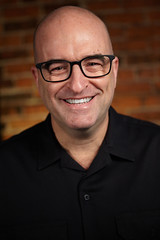 About the Interviewer
About the Interviewer
Greg Bennick (www.gregbennick.com) is a keynote speaker and long time coin collector with a focus on major mint error coins. Have ideas for other interviewees? Contact him anytime on the web or via instagram @minterrors.
To watch the complete video, see:
Ron Gillio Interview
(https://archive.org/details/rongilliointerviewvideo)
To read the complete transcript, see:
Ron Gillio Interview (Transcript)
(https://archive.org/details/gilliointerviewtranscript2)
THE NUMISMATIC PROOF SCALE
Jerry Nashorn submitted these thoughts on numismatic collecting and research inspired by Greg Bennick's interview with Bill Groom. Thank you! -Editor
I very much enjoyed reading Bill Groom's interview concerning counterstamps which is packed with information and sound insights. I think he's hit the nail on the head with his skepticism about many of the attributions contained in reference books, auction catalogs, and online auctions and price lists. And the "proof scale" discussed in Part 4 is a major contribution. The schema he has developed makes a lot of sense. They also would be of use when dealing with other types of numismatic material, such as maverick merchant tokens and award medals inscribed with the recipient's name where an absolutely certain attribution is often not possible. Of course, when dealing with inscribed award medals and merchants' tokens, most would fall into the 2-4 category while a large fraction of counterstamps, even after diligent research, would probably remain 0's or 1's.
Bill's article obliquely raises another point. Because he has a strong interest in counterstamps per se, his approach seems to be buy the coin first and then do the research. My own collecting focuses on obtaining numismatic items associated with places in which I have an interest and over the years I've bought about 5-6 counterstamps. Because of my approach to collecting, if a counterstamp does not include the city in which it was issued, I always do the research first and only if my confidence level is at the 3 or 4 level to use Bill's scale, do I make the purchase.
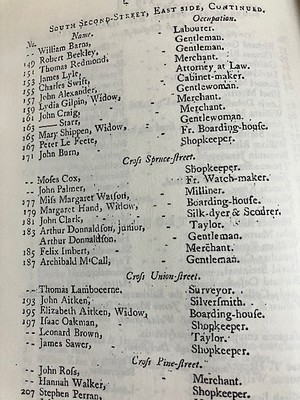 The most recent counterstamp I purchased is one that is commonly attributed to John Aitken, a silversmith who lived and worked in Philadelphia ca. 1785-1830. As is shown in the attached, the host coin is totally worn down though it appears to have a faint hint that it is a draped bust cent. The counterstamp is simply the mark I AITKEN. The eBay seller, I assume following Brunk, attributed it to Philadelphia. Before I bid on it, I wanted more assurance that the piece did indeed have a Philadelphia association.. I already owned an inexpensive reprint edition of a 1799 Philadelphia directory and it included an entry for a silversmith named John Aitken (see attached). In addition, a standard reference on early American silversmiths available on the Internet Archive (Stephen Ensko's "American Silversmiths and Their Marks III") included an image of Aitken's mark which appears identical to the counterstamp (see attached). I also found a completed listing on Etsy for a silver spoon made by Aitken that included a scan of the mark, which also matched (see attached). Satisfied, I bid on the item and fortunately had the high bid.
The most recent counterstamp I purchased is one that is commonly attributed to John Aitken, a silversmith who lived and worked in Philadelphia ca. 1785-1830. As is shown in the attached, the host coin is totally worn down though it appears to have a faint hint that it is a draped bust cent. The counterstamp is simply the mark I AITKEN. The eBay seller, I assume following Brunk, attributed it to Philadelphia. Before I bid on it, I wanted more assurance that the piece did indeed have a Philadelphia association.. I already owned an inexpensive reprint edition of a 1799 Philadelphia directory and it included an entry for a silversmith named John Aitken (see attached). In addition, a standard reference on early American silversmiths available on the Internet Archive (Stephen Ensko's "American Silversmiths and Their Marks III") included an image of Aitken's mark which appears identical to the counterstamp (see attached). I also found a completed listing on Etsy for a silver spoon made by Aitken that included a scan of the mark, which also matched (see attached). Satisfied, I bid on the item and fortunately had the high bid.
Finally, in Part 3, Bill talks about his interest in acquiring examples of the products, if available and affordable, made by the issuers of counterstamps he owns. Of course as he points out, this is not often possible though it is more feasible in the case of counterstamps issued by photographers where examples of their work may be available at an affordable price. While I own very few counterstamps, I have acquired a fair number of award medals engraved with the name of the recipient. However, I have examples of their work in only three instances. Two of the three awardees are late 19th century photographers. For about $10-15 each, I was able to obtain cabinet portrait photos made in their studios.
The final example is by far the most interesting and unusual of the three. The medal in question is a large bronze award medal issued by the San Francisco Mechanics Institute at its 1890 fair for Spanish/Mexican style sewing. The lot (which I found on eBay) included the medal itself, the original plush box, and one of the items displayed at the fair. (see attached photos). In terms of attributing the medal and sample to a specific person, I'm still at the 0 stage and assume I'll never be able to move beyond it. The 1890 San Francisco directory does not include anyone named Melton living at 2700 Larkin St. Census records are of little help since the 1890 Census was largely destroyed by fire in the 1920s while still in Census Bureau custody. The fact that Ms. Melton is only identified by her initials doesn't help either nor does the fact that the report on the 1890 fair is unclear as to whether she was married or single, though the inscription on the medal itself is Miss.
I also very much liked Bill's concept of a "numismatic proof scale". We have scales for size, weight and grading - why not for research? We all have our own B.S. detectors flashing a big fat ZERO when a writer is just making stuff up. And ringing a loud bell when a writer hits one out of the park with comprehensive, convincing research. Great food for thought. -Editor
To read the earlier E-Sylum articles, see:
VIDEO: BILL GROOM ON COUNTERSTAMPS
(https://www.coinbooks.org/v26/esylum_v26n35a05.html)
BILL GROOM INTERVIEW, PART ONE
(https://www.coinbooks.org/v26/esylum_v26n36a17.html)
BILL GROOM INTERVIEW, PART TWO
(https://www.coinbooks.org/v26/esylum_v26n37a19.html)
BILL GROOM INTERVIEW, PART THREE
(https://www.coinbooks.org/v26/esylum_v26n38a18.html)
BILL GROOM INTERVIEW, PART FOUR
(https://www.coinbooks.org/v26/esylum_v26n39a19.html)
SUBSURFACE METAL LATTICE COIN IMAGES
Rob Rodriguez submitted this summary and link to his recent American Numismatic Society lecture. Thank you! Great images. -Editor
New Groundbreaking Scientific Technique Unlocks Mysteries of a 1792 Judd-9 Silver Disme
By Robert Rodriguez
At the 2023 ANS Coinage of the Americas Conference, I presented, History Recovered: Saga of the 1792 Silver Disme,
on September 22.
As a result of our investigations, my colleague, Tony Lopez, and I conclude that the following 1792 Judd-9 silver disme is the Design Work
Surface that was used to design the 1793 half cent. To arrive at this conclusion, our journey of discovery required the most extensive and
intensive scientific investigation ever conducted in the field of numismatics that took place over a period of nearly 4 1/2 years.
In this presentation, the numismatic and antiquities communities were introduced to the power and capabilities of synchrotron-radiation-based X-ray micro-diffraction. At the Argonne National Laboratory's Advanced Photon Source synchrotron, we recovered the first successful subsurface metal lattice image from the interior of a coin. Nearly 600 hours of scans were executed that culminated in the recovery of stunning images of surface features that can no longer be seen or are illegible on the surface. They were recovered from a depth of approximately 50 microns using high-intensity X-rays that are about one million times stronger than that which would occur in a doctor's office. Three physicists, Dr. Wenjun Liu, Dr. Jon Tischler and Dr. Ruqing Xu, conducted the scanning investigations.
As an example of this new powerful scientific investigation technique, this remarkable image was recovered from the subsurface of a 1792 Judd-9a after a 28-hour scan. The date has not been seen since it was effaced away in 1792.
The presentation may be viewed at the following link: https://www.youtube.com/watch?v=0ap8tHI1QrQ. Our paper will be published later this year as part of the proceedings from the 2023 ANS COAC.
We believe this new scientific investigation technique has the ability to unlock mysteries that were thought to be permanently lost. The Advanced Photon Source is now undergoing a two-year upgrade program that will make it the premiere synchrotron of its type in the world.
Rob adds:
"When we recovered the very first image, there was quite a bit of excitement among the three physicists since this had never been achieved before. During the height of Covid, I needed an image that had never been published before from the British Museum. I sent a cold call email to Tom Hockenhull, Curator Director of Coins and Medals. When he saw the date recapture, it blew him away. He drove into the BM that was closed, took a photo with his iPhone and said that if it was not good enough, he would inform the BM's publicity department to do whatever I needed. His photo was perfect, and I used it in the largest edge study of the 1783 Treaty of Paris medal, Betts-614. It has opened a few doors for me. When the date was captured, we were all stunned by it.
"The manuscript for the second project at the Argonne will take me 8-12 months since it is 5x more complex than this research project on the 1792 disme. It will entail around five different papers and will likely become a book. Over 700 hours of X-ray micro-diffraction were involved, along with several other research endeavors. When the Argonne re-opens in 2025, I have a continuing project that will be completed.
"I'm not sure whether the numismatic community will understand the significance of this new scientific technique of investigation. Over time, I hope so."
NOTES FROM E-SYLUM READERS: OCTOBER 8, 2023
Second Life for the 2005 EAC Convention Brochure
Bill Eckberg writes:
"Every time I see one of David's videos on early copper on The E-Sylum, I have to laugh. His logo at the introductions is made up of (mostly) early copper coins in a pile.
"He didn't create that. It served as the back cover that I had created for the 2005 Annapolis EAC convention brochure. He cut it in half along the middle and used the right half for the left side and the left half for the right side of his title pages.
"When I saw him later, I asked him if he was aware that he had usurped (I didn't use that word; I just like it) copyrighted material without attribution. After he blanched noticeably, I told him he had permission henceforth to use it for free. He relaxed and kept using the image for as long as he did videos at EAC shows.
"Here is an image of the original brochure cover. The boat image came from Red Henry, and about six of the coins on the reverse were from my own collection at the time; the rest were used with permission from auction companies. It's always a joy to see the old friends in the videos and old copper friends in the introductions to the videos."
Great story! Thanks. Nice work on the brochure - no wonder it saw new life. Great coins. -Editor
To read the earlier E-Sylum article, see:
VIDEO: MARK BORCKARDT AND PENNY WISE
(https://www.coinbooks.org/v26/esylum_v26n40a10.html)
More on NumiStudy
I reached out to Jon Lusk for an update on the NumiStudy software for researching die varieties of early American copper coins. -Editor
Jon writes:
NumiStudy is still being updated and sold. The original three are still in the saddle. (Myself [computer stuff], Bill Noyes [photography, grading and comments], and Dan Demeo [pedigrees]) We have released version 6 and are working on the next one, due out late next year. The program itself has seen major upgrades to its functionality.
Individual databases are priced as follows:
| Amount | Current coin records | |
|---|---|---|
| Sheldon | $1,500 | 11,948 |
| Newcomb | $1,500 | 14,637 |
| Half Cent | $500 | 2,441 |
| Colonial | $1,500 | 3,973 |
OR All databases with program for $3,000
It's a lot of money I realize, but when a user comes up at a show and says
"Thanks - the database just saved me $5,000
when it showed me what the coin I was about to buy looked like 5 years ago and the current picture of the coin today!"
or
"The dealer tells me it's 5th finest and I see pictures of 11 coins that are better...."
or
"It was great to see the price history on a coin I was looking at. Helped with my decision."
Thanks. For inquiries, Jon can be reached at jon@lusk.cc . -Editor
To read the earlier E-Sylum article, see:
VIDEO: NUMISTUDY
(https://www.coinbooks.org/v26/esylum_v26n39a10.html)
AI-Generated Numismatic Images
Justin Hinh writes:
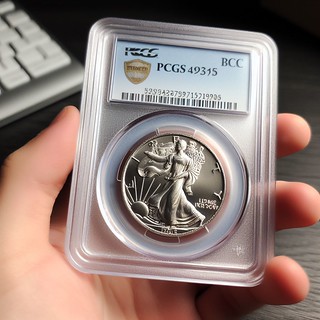 "I wanted to bring up a topic that I think readers would find both interesting as well as giving them a chance to add their own perspective to the matter.
"I wanted to bring up a topic that I think readers would find both interesting as well as giving them a chance to add their own perspective to the matter.
Interesting! Thanks. Impressive at first glance. These things are destined to get better over time. Here's an interesting article I came across this week. -Editor
Now, enough pieces of the jigsaw puzzle are in place that we can start to see what AI can actually do, at least in the short term. Many pieces are still missing, though, and this is a temporary state of affairs, AI continues to improve.
We have these pieces which let us guess at the shape of the AI in front of us. It isn't science fiction to assume that AIs will soon talk to you, see you, know about you, do research for you, create images for you - because all of that is already built, and working. I can already pull all of these elements together myself with just a little effort. That means AI can quite easily serve as personal assistant, intern, and companion - answering emails, giving advice, paying attention to the world around you — in a way that makes the Siris and Alexas of the world look prehistoric.
To read the complete article, see:
The shape of the shadow of The Thing
(https://www.oneusefulthing.org/p/the-shape-of-the-shadow-of-the-thing)
More on Damaged Money
Ken Berger writes:
"In the past, I both lived and traveled to various countries in Asia. It is quite common in many countries for less than perfect bank notes to be rejected. I once had trouble converting a $100 bill in Hong Kong (before its turn over to mainland China) because it had gotten wet. In addition, smaller bills are harder to convert than larger ones. I only convert $100 bills.
"Also, besides being in pristine condition, the note should be of the latest series. In the Philippines (unlike in the U.S.), when a new series is issued, the old series is no longer valid. Because of this, money changers in the Philippines will not accept anything but the latest series because they believe that other countries treat older series notes in a similar manner. During my last trip to the Philippines, I met some Chinese tourists in a restaurant. They had the equivalent of a few hundred dollars U.S. in Philippine bank notes from an earlier visit. They were both shocked and disappointed to learn that all their older Philippine bank notes were now worthless.
"So, in summary, only convert large bills of the latest series in pristine condition."
Thanks for the advice! -Editor
To read the earlier E-Sylum articles, see:
VIETNAM'S DAMAGED MONEY COLLECTORS
(https://www.coinbooks.org/v26/esylum_v26n39a26.html)
NOTES FROM E-SYLUM READERS: OCTOBER 1, 2023 : On Damaged Cash in the Philippines
(https://www.coinbooks.org/v26/esylum_v26n40a12.html)
Where Not To Find the Hell Gate Treasure
Ken Berger writes:
 "I grew up in Astoria (specifically Hallet's Cove), one and a half blocks from the East River. Everybody was familiar with the story regarding the gold coins. However, I have always understood that the treasure is now buried under tons of landfill when the shoreline was expanded. So, people searching for it in the water are wasting their time."
"I grew up in Astoria (specifically Hallet's Cove), one and a half blocks from the East River. Everybody was familiar with the story regarding the gold coins. However, I have always understood that the treasure is now buried under tons of landfill when the shoreline was expanded. So, people searching for it in the water are wasting their time."
To read the earlier E-Sylum article, see:
THE LEGEND OF NEW YORK'S HELL GATE TREASURE
(https://www.coinbooks.org/v26/esylum_v26n40a27.html)
Reading Kindle Books Without a Kindle
James Higby writes:
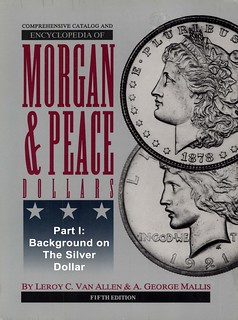 "I am thrilled that the three volumes on Morgan dollars are going to be made available in digital format.
However, I know absolutely nothing about Amazon's Kindle, let alone how to get it on my computer. Perhaps in you could elaborate for us newbies on how it works and how to get it on our machines."
"I am thrilled that the three volumes on Morgan dollars are going to be made available in digital format.
However, I know absolutely nothing about Amazon's Kindle, let alone how to get it on my computer. Perhaps in you could elaborate for us newbies on how it works and how to get it on our machines."
Well, it's not as simple as downloading a .pdf of the book you purchased - Amazon doesn't want to let anyone share their e-books. But there are options which don't require the Kindle device. Here's what Amazon says. -Editor
- Download the free Kindle app and start reading Kindle books instantly on your smartphone, tablet, or computer - no Kindle device required.
- Read instantly on your browser with Kindle for Web.
Supported Operating Systems:
- PC: Windows 8, 8.1, 10, or 11.
- Mac: OS x 10.14 or higher
Note: If your operating system isn't supported, use our Kindle Cloud Reader.
Links:
Install or Update the Desktop Kindle App on Your Computer
(https://www.amazon.com/gp/help/customer/display.html?nodeId=GZSM7D8A85WKPYYD)
https://read.amazon.com/kindle-library
That second link is the Kindle Cloud Reader - e-books that you purchase from Amazon will appear here and you can read them directly in your browser without downloading a thing. -Editor
To read the earlier E-Sylum article, see:
NEW BOOK: MORGAN AND PEACE DOLLARS 5TH ED
(https://www.coinbooks.org/v26/esylum_v26n40a05.html)
Query: We Shall Persevere
Nobody asked, so I will. What is the source for the motto "We Shall Persevere" on the 2023 American Liberty silver medal? As a medal and not a (bullion) coin, it needn't include all the inscriptions required by law on coins. But it's an interesting juxtaposition to see the gold coin and silver medal obverses side-by-side, one with "In God We Trust" and the other without it. -Editor
To read the complete article, see:
2023 American Liberty Gold Coin and Silver Medal Launching
(https://www.coinnews.net/2023/08/10/2023-american-liberty-gold-coin-and-silver-medal-launching/)
LIBRARY COMPANY FRANKLIN EXHIBIT FEATURES MONEY
Ray Williams contributed to a new exhibit at the Library Company of Philadelphia, which includes original printing blocks used to produce Franklin & Hall Delaware Currency. Check it out if you're in the area. -Editor
Ray writes:
"I wanted to make everyone aware that there is an exhibit honoring some of Franklin's contributions to numismatics, including three printing blocks used to print colonial currency. One of the blocks is Franklin's nature print! The timing coincides with the 300th anniversary of Franklin crossing the Delaware into Philadelphia after which the city, colony and country would never be the same. Who knows when the next opportunity will be to view these items?
The exhibit is at the Library Company of Philadelphia, founded by Franklin in 1731, and will be on display thru the end of the year. The possibilities for numismatic research at this library is endless. Dr. Jessica Linker was instrumental in selecting items for the exhibit and writing the text describing the contents."
New Exhibit Opening
This October marks the 300th anniversary of Benjamin Franklin's arrival in Philadelphia. His famous autobiography recounts the sequence of events that encouraged him to run away from an apprenticeship under his brother, James, in September of 1723. When Franklin first walked down Market Street as a teenager, he had no idea how influential he would become and so quickly. Indeed, only a couple of years later, in 1731, he helped to establish the Library Company of Philadelphia, which today houses many important Franklin artifacts of interest to researchers.
An interesting subset of these holdings speak to Franklin's life-long involvement with money. Many of us grew up learning the phrase a penny saved is a penny earned
as one of many Franklin's favorite adages encouraging frugality and practicality (in actuality, the text from Poor Richard reads A penny saved is two pence clear
), but we may be less aware of the role Franklin played in printing, designing, and advocating for early American currency. This exhibit, curated by Ray Williams, a numismatist, and Jessica Linker, Assistant Professor of History at Northeastern University, explores this theme through a series of unique holdings at the Library Company. These items include Benjamin Franklin's personal copy of his treatise in defense of paper currency, A Modest Enquiry into the Nature and Necessity of a Paper Currency (1729), the original printing blocks used to produce Franklin & Hall Delaware Currency (on permanent deposit from Delaware County Institute of Science), and coins donated by Williams of the type that Franklin may have had in his pocket upon entering Philadelphia.
Obverse and reverse of 1787 Fugio Cent (New Haven) from the exhibit. On loan from Ray Williams.
As with all exhibits, we had to make choices. Not everything could fit in the case, and as such, we would like to recommend additional items to researchers who may be interested in related topics. Library Company has a large collection of eighteenth-century paper currency, ranging from colonial to continental emissions, including a few counterfeit bills. Franklin was also not the only pamphleteer to weigh in on whether colonies should emit paper currency in the 1720s, nor was the debate limited to Pennsylvania. A pamphlet entitled Massachusetts in agony!
[Am 1765 Qui (b.w.) 15362 .Q.3 (Zinman)] provides insight into Franklin's hometown on the matter. The Case of the Inhabitants in Pensilvania
[#Am 1751 Case Dickinson 164] recounts the history of paper currency in Pennsylvania in response to threats to regulate it. Those interested in seeing how the debate over paper money evolved can find such pamphlets up through the American Revolution. The printed acts for various colonies additionally contain information regarding when new emissions of paper money were issued; the early Pennsylvania acts were also printed by Franklin. If you are intrigued by the printing blocks in the case, you may also wish to view Joseph Breintnall's nature prints, which helped to inspire Franklin's castings of leaves.
The exhibit will be open from October 6, 2023 through January 5, 2024, free of charge, in the Library Company's Logan Room. We would like to thank Emily Guthrie, Sharon Hildebrand, Jim Green, Geremea Fioravanti, and the Delaware County Institute of Science for assistance and advice provided.
To read the complete announcement, see:
Celebrating the 300th Anniversary of Franklin's Arrival in Philadelphia: New Exhibit Opening
(https://librarycompany.org/2023/10/04/celebrating-franklins-300th-arrival-in-philadelphia-new-exhibit-opening/#/)
THE BOOK BAZARRE
How lucky we are to share in Rendell's passion,writes Doris Kearns Goodwin in the book's foreword. Order your copy online at Whitman.com , or call 1-800-546-2995.
FINANCIAL DOCUMENT EXHIBIT AT IMEX
The Museum of American Finance will exhibit some of its treasures at the upcoming IMEX show in Nashville. Here's the press release. -Editor
The Museum of American Finance, an affiliate of the Smithsonian Institution based in New York, has been invited to display some of the most important documents from its world-class collection at the first annual International Money Exposition (IMEX) in Nashville, TN, from October 27-28, 2023. IMEX is a global money show that is expected to attract more than 350 dealers and thousands of attendees from around the world.
 As part of its mission to preserve and present the history and practice of finance in the United States,
the Museum actively collects important documents and artifacts related to the capital markets,
money, banking and free enterprise. The archive houses thousands of documents, certificates and
examples of currency, including the nation's premier collection of 18th century US financial
documents, as well as artifacts ranging from vintage stock tickers to Wall Street memorabilia. The
collection also includes photographs, prints, books and periodicals pertaining to the history of finance,
business and economics.
As part of its mission to preserve and present the history and practice of finance in the United States,
the Museum actively collects important documents and artifacts related to the capital markets,
money, banking and free enterprise. The archive houses thousands of documents, certificates and
examples of currency, including the nation's premier collection of 18th century US financial
documents, as well as artifacts ranging from vintage stock tickers to Wall Street memorabilia. The
collection also includes photographs, prints, books and periodicals pertaining to the history of finance,
business and economics.
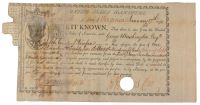 Objects from the Museum's collection to be displayed at IMEX include:
Objects from the Museum's collection to be displayed at IMEX include:
-
Alexander Hamilton's 1790
Report on the Public Credit,
which is the economic equivalent of the US Constitution - President George Washington's federal bond for $185.95 of assumed debt, dated January 17, 1792, and signed by Washington
- Earliest known check in the public domain
-
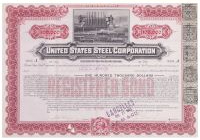 US Steel Corporation $100,000 bond issued to Andrew Carnegie on June 14, 1901 and
redeemed by the J.P. Morgan Company on July 23, 1913
US Steel Corporation $100,000 bond issued to Andrew Carnegie on June 14, 1901 and
redeemed by the J.P. Morgan Company on July 23, 1913
- Blank check signed by President John F. Kennedy and carried by his Secret Service when he was assassinated in Dallas on November 22, 1963
Museum staff members will be on hand to discuss the documents, as well as provide general information on the Museum and its programs, to conference attendees. IMEX will be held at the Music City Center in Downtown Nashville. It will be open to the public from 10am-6pm on Friday, October 27, and from 9am-5pm on Saturday, October 28.
About the Museum of American Finance
As a socially relevant organization, the Museum of American Finance seeks to improve understanding
of the influence of financial institutions and capital markets on the US and global economies, and on
individuals' lives. The Museum is dedicated to educating the public on finance and financial history
through exhibits, financial literacy programs and public events. An affiliate of the Smithsonian
Institution, the Museum seeks to empower individuals of all backgrounds to strive toward financial
independence, while encouraging curiosity and discovery.
To read the complete article, see:
MoAF to Display Collection Highlights at International Money Exposition in October
(https://www.moaf.org/news/press_releases/2023-09-26-museum-of-american-finance-to-display-collection-highlights-at-international-money-exposition-imex-in-october)
For more information on the show, see:
https://imex.show/
VOCABULARY TERM: OFF FLAN
Here's another entry from Dick Johnson's Encyclopedia of Coin and Medal Terminology. -Editor
Off Flan. Design or lettering not appearing on a struck piece because a smaller than intended planchet was used to strike the piece. The design or lettering is in the die and intended to appear in the struck piece, but too small a diameter blank was used. Obviously, this missing detail is near the edge of the struck piece. The missing portion of the design or lettering is said to be off flan. The 1791 Liverpool Halfpenny bearing George Washington's portrait and intended for circulation in America were all struck on too small a planchet with parts of lettering in the legend off flan (Breen 1223).
The same term can be used for missing design and lettering not on a piece that was struck off center but this is to be expected, more so with greater degree off center.
Reference:
NC12 Breen, p 138.
Here are a couple images of Liverpool Halfpennies showing the cut of lettering. -Editor
To read the complete entry on the Newman Numismatic Portal, see:
Off Flan
(https://nnp.wustl.edu/library/dictionarydetail/516419)
ALLISON W. JACKMAN
E-Sylum Feature Writer and American Numismatic Biographies author Pete Smith submitted this article on collector Allison Jackman. Thanks! -Editor
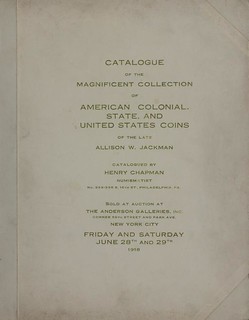 I first came across the name of Allison Jackman while doing research for a 1986 book. That was
long before the Newman Numismatic Portal and I needed to find an actual physical copy of the
1918 Henry Chapman sale of his collection. The catalog had a memorable description:
I first came across the name of Allison Jackman while doing research for a 1986 book. That was
long before the Newman Numismatic Portal and I needed to find an actual physical copy of the
1918 Henry Chapman sale of his collection. The catalog had a memorable description:
Mr. Allison W. Jackman was a highly educated gentleman who devoted his life to study, having
never engaged in business, and being a most devoted son with an equally appreciative mother,
his collecting was a pleasure to both of them.
This week I set out to see what else I could learn about him.
Allison Jackman was born in Pennsylvania in 1849, the son of David Kilbourne Jackman and
Saraphina P. Ross. For the 1850 Census, David was a merchant in Lock Haven, Pennsylvania.
The 1860 Census is interesting in that it lists the father as a gentleman
and his son as Albisa
in an apparent misinterpretation of the handwriting. The family was still living in Loch Haven,
Pennsylvania. For the 1870 Census, David was listed as a farmer living in Bath, New Hampshire.
David died before the 1880 Census. By 1910. Saraphina and Allison were in Poughkeepsie, New York. There was a younger son, David Kilbourne Jackman, Jr. who was married with children and can be traced with a respectable biography. This is not true for Allison.
I did not find Allison W. Jackman mentioned in a newspaper before the death of his mother. Saraphina Jackman died in 1914 at age 95. She left an estate with an estimated value of $100,000. There was a dispute over the estate brought by grandchildren who were left out of the will.
Jackman suffered a brain hemorrhage in September 1917 and was hospitalized. He died at Hyannis, Massachusetts, on October 23, 1917. His estate was challenged by nephews who were described as having a bitter dispute over the will of Saraphina.
Jackman had been a life member of the American Numismatic Society but not a member of the ANA.
Jackman's coin collection was offered by Henry Chapman in his sale of June 28, 1918. The highlight of the sale was his Brasher Doubloon. The coin realized $3,900, well below the previous sale at $6,000. The sale also included a fine walnut coin cabinet and a library of the standard references available at the time.
A newspaper account of the sale described the auctioneer, Henry Chapman, as a famous
pneumismatist.
The Jackman collection and auction hold a place in numismatic history. Coins with a pedigree back to that sale have a prestige above that of an unpedigreed coin.
Otherwise, the life of Jackman carries no prestige. He did nothing in his life for good or for evil to distinguish himself.
Well, that's harsh. Lots of people, undoubtedly most, go through life leaving little trace behind. Some of us may be remembered as coin collectors, if for little else. -Editor
To read the Jackman catalog on the Newman Numismatic Portal, see:
ADMINISTRATOR'S SALE. CATALOGUE OF THE COLLECTION OF MAGNIFICENT SPECIMENS OF AMERICAN COLONIAL, STATE AND UNITED STATES COINS AND MEDALS IN GOLD, SILVER AND COPPER. NEW YORK BRASHER'S DOUBLOON 1787, PAPER MONEY AND NUMISMATIC BOOKS OF THE LATE ALLISON W. JACKMAN, POUGHKEEPSIE, N.Y.
(https://nnp.wustl.edu/library/auctionlots?AucCoId=20&AuctionId=511112)
THE DAHLONEGA GOLD MUSEUM
In an October 5, 2023 email to clients, John Brush of David Lawrence Rare Coins published a report from his recent visit to the Dahlonega Gold Museum. -Editor
On Friday afternoon, I found myself wandering through the lovely downtown of Dahlonega, Georgia. For those of you who have never visited the small gold rush town in North Georgia, I highly encourage you to visit. It's a quaint town with restaurants, antique shops, and a classic downtown city hall which now houses the Georgia Gold Rush Museum.
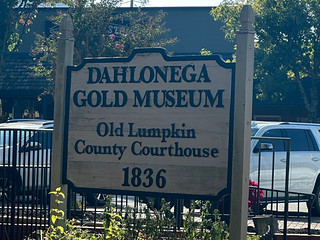 Of all the cities to house a branch mint, Dahlonega is certainly the smallest. It was one of the most unique mints as it only survived until 1861 when the Confederate soldiers took over the mint. However, it was incredibly active during the first gold rush in American history which occurred a short walk away in the southern portion of the Appalachian Mountain chain. At city hall, a video describing a brief history of the mint and the gold rush had some very interesting stories. What I found most interesting was that the purity of North Georgia gold is far superior to any other gold that has been discovered in America. That's part of the reason the coins, while not sharply struck, carry a slightly different tint than most of the coins from other mints.
Of all the cities to house a branch mint, Dahlonega is certainly the smallest. It was one of the most unique mints as it only survived until 1861 when the Confederate soldiers took over the mint. However, it was incredibly active during the first gold rush in American history which occurred a short walk away in the southern portion of the Appalachian Mountain chain. At city hall, a video describing a brief history of the mint and the gold rush had some very interesting stories. What I found most interesting was that the purity of North Georgia gold is far superior to any other gold that has been discovered in America. That's part of the reason the coins, while not sharply struck, carry a slightly different tint than most of the coins from other mints.
I've included a few pictures below that I took. Unfortunately, the original mint no longer stands, as it was originally repurposed into an admissions building for North Georgia Military College, but eventually burned down. So, while there's not a lot to see outside of the museum, the coin collection (a complete set of Dahlonega gold!) and friendly faces learning a little bit about coinage was enjoyable. Being a numismatist and storyteller, I couldn't help but pass along a little numismatic knowledge to the folks in the museum while we toured. Hopefully, a little nugget may turn them into a collector!
After leaving the city, we drove up north through the Great Smoky Mountains for several hours. While the leaves aren't changing quite yet, it was an enjoyable trip and the scenery was still breathtaking. If you find yourself in Atlanta (or nearby) make the day trip to Dahlonega. The numismatist in you won't regret it!
To read the complete article, see:
Numismatic Field Trips Part 1
(https://mailchi.mp/davidlawrence/coins-we-love-jan-118110)
NUMISMAGRAM MEDAL SELECTIONS: OCTOBER 8, 2023
Jeremy Bostwick at Numismagram passed along these four tokens and medals from his most recent upload of new material to his site. For all of the new items, please visit https://www.numismagram.com/inventory. -Editor
102353 | FRANCE. Lodge of Saint Germain silver Jeton. Issued 1787 (23mm, 3.74 g, 6h). JETTON DE ST. GERMAIN, compass, square, and acacia sprays // CURAT PAUPERES ([He] looks out for the poor), radiant Eye of Providence. Edge: Reeded. Labouret 448. PCGS MS-62. Lightly toned, with great brilliance; a minor planchet flaw near the edge of the reverse is noted for completeness. Fairly rare and interesting. $645.
Contemporaneous to the "first coins" of the United States, the Nova Constellatio coppers of 1783, this silver masonic issue from the Lodge of Saint Germain in France was struck just four years later, possibly inspired by the "all-seeing eye" iconography as seen on the Nova Constellatio coppers.
To read the complete item description, see:
102353 | FRANCE. Lodge of Saint Germain silver Jeton.
(https://www.numismagram.com/product-page/102353)
102555 | GERMANY. Paul Ehrlich bronze Medal. Issued 1910. Commemorating the 56th birthday of the Nobel Prize recipient and breakthrough researcher on the treatment of syphilis (59mm, 74.13 g, 12h). By K. Goetz. PAVL • EHRLICH • ÆTATIS • ANNO • LVI • MCMX, bust right in frock coat // Nude Asclepius standing left, holding staff and feeding serpent from patera; CORPORA / NON / AGVNT - NISI FIXATA (Ehrlich's maxim: a drug will not work unless it is bound) across field. Edge: Plain. Kienast 43. Choice Mint State. Tan-brown surfaces, with some darker hues around the devices and an alluring matte nature. $495.
Paul Ehrlich was an important German physician and scientist who contributed greatly to the field of immunology. Awarded the Nobel Prize in Physiology/Medicine in 1908 for the standardization of manufacturing anti-diphtheria serum, he actually garnered even more fame through a discovery with fellow researcher, Sahachiro Hata from Japan. This breakthrough involved arsphenamine (also known as Salvarsan or compound 606) and was the first effective treatment for syphilis. This incredibly important treatment further led to Ehrlich's concept of the "magic bullet" (i.e., the idea that it would be possible to kill a bacteria or disease within one's body by using a targeted treatment without harming the body itself), and also served as the foundation to the concept of chemotherapy. The contributions of Ehrlich and Sata cannot be understated, especially when considering the importance of public health and the medical researchers tasked with maintaining it.
To read the complete item description, see:
102555 | GERMANY. Paul Ehrlich bronze Medal.
(https://www.numismagram.com/product-page/102555)
102490 | GREAT BRITAIN. England. Edward VI silver faux-engraved Jeton or Gaming Counter. Issued circa 1720, or slightly later. Series 5: Sovereigns of England: Half length (25mm, 2.11 g, 12h). By the school of Simon van der Passe. EDWARD THE VI, capped, crowned, and ermine-mantled bust facing slightly left, wearing ruffled collar and holding sword and orb; portcullis to right // Crowned coat-of-arms with Garter collar; all within elaborate border. Cf. Mitchener p. 1675, 23. Choice About Uncirculated. Very lightly toned, with excellent intricate artistry. A fairly rare later type from a popular series. $395.
Gambling and games of chance have served as a form of entertainment and excitement during much of recorded history in one way or another, and many of these games necessitate some form of accounting during play. In early modern Europe, jetons were commonly employed for these purposes and allowed for skilled engravers to promote their artistry. One such engraver was Simon van der Passe, born in Utrecht circa 1585.
Van der Passe worked in England from 1616–1621/2, having founded a school after being exempted from the royal monopoly given previously to Nicholas Hilliard. This exemption allowed for the "graving and imprinting medailles" and small portraits of the king, and van der Passe utilized his technique for the production of numerous series of jetons or gaming counters, initially employing portraits of the Stuarts, James I and later Charles I with his wife, Henrietta Maria. Though Simon would return to Holland in 1621/2, his London-based school continued under the management of his brother, William. Subsequent issues of these jetons would feature Gustav Adolph and his wife, Maria Eleonora, the sovereigns of England, 'classical portraits' of historical and biblical figures, 'street cries,' and the Commonwealth.
Of even greater interest and debate among numismatists over the past century has been the method of manufacture of these jetons. Their appearance at first glance would lead one to believe that they have been individually engraved owing to their incuse design. It is thought that, in fact, these ornate counters were skillfully cast (or struck) and polished through the niello process in order to generate this 'faux-engraved' effect.
To read the complete item description, see:
102490 | GREAT BRITAIN. England. Edward VI silver faux-engraved Jeton.
(https://www.numismagram.com/product-page/102490)
101822 | UNITED STATES. F. & M. Schaefer Brewing Company bronze Medal. Issued 1942 for the 100th anniversary of the brewery (31mm, 12.31 g, 12h). By R. P. Chambellan. OUR HAND HAS NEVER LOST ITS SKILL, hand upward, holding chalice of beer; in background to left, company's original headquarters in 1842; in background to right, company's then headquarters in 1942 // TO / COMMEMORATE / OUR 100TH YEAR / THE F. & M. SCHAEFER / BREWING CO. / AMERICA'S OLDEST LAGER BEER in six lines within wreath composed of hop cones and ears of barley. Edge: Plain. MACO 1941-046-001. Choice About Uncirculated. Olive-brown surfaces, with some lighter brown color in spots. $165.
Founded in 1842 by German-born brothers Friedrich and Maximilian, the F. & M. Schaefer Brewing Company began operation in New York City, specializing in lager beer produced by the German tradition. By 1871, the company had risen to number six among American brewers, and continued to remain a strong, popular producer into the 20th century. In the 1960s and '70s, it furthered its holdings by acquiring several regional breweries. Schaefer, however, was itself acquired in 1981 by Stroh Brewing Company, which, in turn, was acquired by Pabst Brewing Company in 1999.
To read the complete item description, see:
101822 | UNITED STATES. F. & M. Schaefer Brewing Company bronze Medal.
(https://www.numismagram.com/product-page/101822)
MDC OCTOBER 2023 FRENCH COLLECTION SELECTIONS
Here are some final selections from The French Collection offered in this month's MDC Monaco Auction No. 12. -Editor
presented by MDC Monnaises de Collection
Auction October 11, 2023
MDC Monnaies de collection is excited to auction The French Collection
in October 2023.
The collection of 540 lots, built over 40 years, includes the most beautiful coins from the
French Revolution to the Fifth Republic, with a vast majority of Top Pop. Today, it is not
possible to recreate such a collection. We know that many collectors will find in it the special
coins they have been looking for. The auction will take place in Monaco at the Hôtel Métropole on the 11th of October 2023, from 1:30 pm to 4 pm (lots 1 to 296) and from 4:15
pm to 7 pm (lots 297 to 540), Nicolas Gimbert, Auctioneer.
To view the complete collection:
https://mdc.mc/auction/vente-aux-encheres-numismatique-12/
Lot 114: FRANCE Hundred Days / Napoleon I (March-July 1815). 5 francs Empire, Flan bruni (PROOF) 1815, A, Paris. Av. NAPOLEON EMPEREUR. Bust to the right of Napoleon I, laureate head, below signature BRENET and Tr. Rv. FRENCH EMPIRE (date). In a crown formed of two branches: 5 FRANCS. G.595-F.307; Silver - 25 g - 37 mm - 6 h. Top Pop (2): it's the most beautiful graded coin!
PCGS PR63+. Burnished flan (PROOF), and centered and neat strike. Collector's patina with bluish reflections. The other known copy in PR63+ made $60,000 on August 25, 2021 at Stack's Bowers. Almost Fleur de Coin.
Starting price: 10000 €
Lot 137: FRANCE Charles X (1824-1830). 2 francs, fluted edge, Flan bruni (PROOF) 1830, A, Paris. Av. CHARLES X KING OF FRANCE. Bare head left, signature MICHAUT and T. Rv below. Crowned shield of France, accosted with 2 - F, between two laurel branches, below (different) (date) (mint). G.516a - F.259; Silver - 10 g - 27 mm - 6 h. Top Pop: it's the only graded coin!
PCGS PF64. Browned flan (PROOF). Fluted edge. A micro-scratch on the bust otherwise in mint condition, with mirror fields. Of the greatest rarity! Almost Fleur de Coin.
Starting price: 6000 €
Lot 152: FRANCE Louis-Philippe I (1830-1848). Essay of 5 francs to the Charter, 1st type with charters inscribed in relief, edge in relief 1830, A, Paris. Av. LOUIS PHILIPPE I - KING OF THE FRENCH. Bare head on the right, signature NP TIOLIER. Rev. TITLE 900 MIL. - WEIGHT 25 GRAM. On a scepter and the hand of Justice posed in saltire, accompanied by flags in saltire, the tables with the CHARTER OF 1830, under a crown. Below 5 - F and (workshop) TEST (different). G.672a - Maz.1109; Silver - 24.95 g - 37 mm - 6 h. Top Pop: it's the most beautiful graded coin!
NGC MS 63. Edge in relief: GOD PROTEGE LA FRANCE. Tables in relief on the reverse. With a deep collectible gray patina. Very rare. Superb at Fleur de Coin.
Starting price: 2000 €
Lot 222: FRANCE 2nd Republic (1848-1852). Proof of 5 francs Ceres in gold, Special mint (SP) 1849, A, Paris. Av. FRENCH REPUBLIC. Head of the Republic to the left in Ceres, under a star, below signature EA OUDINÉ. F. Rev. (branch) FREEDOM. EQUALITY. FRATERNITY. In a crown formed of two branches: 5 FRANCS (date) and below (different) (mint) (different). Maz.1214-G.719 (1989); Gold - 25 g - 37 mm - 6 h. Top Pop: it's the only graded coin!
PCGS SP66. Special strike (SP) with matt reliefs on mirror fields. Smooth edge. Minimal marks on the border on the obverse at 5 o'clock and on the reverse at 12 o'clock. Of exceptional quality with its striking velvet! Missing from the Farouk collection and undoubtedly unique! Corner flower.
Starting price: 100,000 €
Lot 236: FRANCE 2nd Republic (1848-1852). 10 francs Cérès, Flan bruni (PROOF) 1851, A, Paris. Av. FRENCH REPUBLIC. Head of the Republic to the right in Ceres, under a star, between a beam and a branch; below signature L. MERLEY. Rev. FREEDOM. EQUALITY. FRATERNITY. In a wreath formed of an olive branch and an oak branch: 10 FRANCS. Below (workshop) and (date). G.1012 - F.504 - Fr.567; Gold - 3.22 g - 19 mm - 6 h. Top Pop: it's the most beautiful graded coin!
NGC PF 64. Burnished blank (PROOF) and perfect strike. A minimal rust spot on the right. Very rare. Corner flower.
Starting price: 3000 €
Lot 249: FRANCE 2nd Republic (1848-1852). 20 francs Louis-Napoleon Bonaparte, Flan bruni (PROOF) 1852, A, Paris. Av. LOUIS-NAPOLEON BONAPARTE. Bare head right. Below, signature BARRE and (different). Rev. FRENCH REPUBLIC. In a crown formed of two branches: 20 FRANCS (date) and below (mint). G.1060 - F.530 - Fr.568; Gold - 6.45 g - 21 mm - 6 h. It's the second highest grade! From the Mortimer Hammel collection, Stack's 1982.
PCGS PR64 DCAM. Browned flan (PROOF). Almost in its mint condition with the mirror fields (tiny hairlines) and the detached reliefs, with an intense cameo appearance (DCAM). Deep orange patina. Very rare. Almost Fleur de Coin.
Starting price: 10000 €
Lot 272: FRANCE Second Empire / Napoleon III (1852-1870) Trial minting of 50 francs bare head, Special Frappe (SP) 1854, Paris. Av. NAPOLEON III EMPEREUR / * ESSAY (date) *. Bare head to the left, BARRE signature below. Rev. FRENCH EMPIRE / * 50 FRANCS *. In the centre, an eagle with outstretched wings on a thunderbolt. Maz.1605 - G.1110a; Gold - 16.12 g - 33 mm - 6 h. Top Pop: it's the only graded coin!
PCGS SP62. Special Strike (SP). Only minimal micro-scratches and hairlines. Orange patina. Very rare. Superb at Fleur de Coin.
Starting price: 60000 €
Lot 293: Lot 293. FRANCE Second Empire / Napoleon III (1852-1870) Essay of 100 francs laureate head, Special mint (SP) 1861, Paris. Av. NAPOLEON III EMPEROR. Laureate head on the right, below (star) and BARRE signature. Rev. FRENCH EMPIRE. Imperial arms placed on a crowned mantle and debruising on the scepter and the hand of justice, accosted by 100 - FRs; below (star) (date) (different). G.1136a - Maz.1602; Gold - 32.25 g - 35 mm - 6 h. it's the second highest graded coin!
PCGS SP65. Smooth edge. Slight golden patina. Matt reliefs on mirror fields. Corner flower.
Starting price: 200,000 €
Lot 425: FRANCE Third Republic (1870-1940). Pre-series of 20 francs Marianne, Special mint (SP) 1898, Paris. Av. FRENCH REPUBLIC. Laureate head of the Republic on the right, signature JC CHAPLAIN. Rev. FREEDOM. EQUALITY.FRATERNITY. 20 - Fcs. Rooster at left; in the exergue (date). GEM.276.5 - G.1064 - Fr.596; Gold - 6.45 g - 21 mm - 6 h. Top Pop: it's the only graded coin!
PCGS SP63. Without different and embossed edges. Special Strike (SP). Slightly matte
appearance. Very rare and probably the third known copy! Almost Fleur de Coin.
Starting price: 12000 €
To read the earlier E-Sylum articles, see:
MDC OCTOBER 2023 FRENCH COLLECTION
(https://www.coinbooks.org/v26/esylum_v26n32a27.html)
MDC OCTOBER 2023 FRENCH COLLECTION 5 FRANCS
(https://www.coinbooks.org/v26/esylum_v26n36a23.html)
MDC OCTOBER 2023 FRENCH COLLECTION GOLD
(https://www.coinbooks.org/v26/esylum_v26n37a26.html)
MDC OCTOBER 2023 FRENCH COLLECTION 1791-1795
(https://www.coinbooks.org/v26/esylum_v26n38a29.html)
MDC OCTOBER 2023 FRENCH COLLECTION NAPOLEONIC
(https://www.coinbooks.org/v26/esylum_v26n39a22.html)
MDC OCTOBER 2023 FRENCH COLLECTION SELECTIONS
(https://www.coinbooks.org/v26/esylum_v26n40a18.html)
WBNA OFFERS CHANG-MARSHALL JAMAICAN BANKNOTES
On November 3rd World Banknote Auctions will sell a landmark collection of Jamaican banknotes. Here's the announcement. -Editor
Ian Marshall Collection of Jamaican Banknotes
World Banknote Auctions is thrilled to announce its upcoming auction of the Isabella Chang Fong & Ian Marshall Collection of Jamaican Banknotes, a remarkable and unrivaled assembly of Jamaican currency. This collection, widely regarded as arguably the most extensive and specialized assortment of Jamaican banknotes of the Sterling era ever put together, will be sold to collectors and enthusiasts worldwide by World Banknote Auctions on November 3rd, 2023, at 10 AM PST.
The Isabella Chang Fong & Ian Marshall Collection stands as the result of the passion,
dedication, and expertise of these collectors, who have poured countless hours into building this
advanced and comprehensive collection. Their decision to offer this extraordinary assemblage to
the collecting community is a testament to their profound love for the world of Jamaican
banknotes. This collection showcases what many years of dedicated collecting in world paper
money can result in
said Dennis Hengeveld, President of World Banknote Auctions. While
other collections of Jamaican banknotes have formed over the years, none have come close to the
breadth and scope of the Isabella Chang Fong & Ian Marshall Collection, giving today's
generation of collectors a once-in-a-lifetime opportunity
.
The breadth and scope of the collection is truly astonishing. The earliest note in the collection is from the 1820s and is in fact the earliest paper money specifically printed for the British West Indies. From there, numerous extremely rare 19th century issues are included, most of which are unique or nearly so. The government issues of the Sterling era, starting in 1918, are complete by Pick number including numerous non-issued varieties. Besides issued notes the collection includes not just one of each specimen but often multiple specimens, each distinguished by unique annotations and characteristics. Furthermore, this remarkable collection boasts an impressive array of trials, some of the most spectacular ever seen in the market. Private bank issues in this collection exhibit a staggering variety and depth. For example, in the Barclays Bank section, a trio of serial number 1 notes is offered which are the very first notes printed for the Jamaican branch of this important bank, the successor to the famous Colonial Bank.
All lots of this collection are now posted to the company's website and are open for bidding. A copy of the printed catalog is available on the firm's website. The buyer's premium for this sale is 20%, and like all World Banknote Auctions' sales convenient payment methods and flat-rate shipping is offered.
About World Banknote Auctions: Headquartered in Sacramento, California, World Banknote Auctions was founded by Dennis Hengeveld. The firm specializes in auctions of US & World Paper Money held regularly on its website, www.worldbanknoteauctions.com.
To browse the catalog, or to bid, see:
World Banknote Auctions Isabella Chang Fong & Ian Marshall Collection of Jamaican Banknotes
(https://www.worldbanknoteauctions.com/auctions/world-banknote-auctions-isabella-chang-fong-ian-marshall-collection-of-jamaican-banknotes/)
NUMISMATIC NUGGETS: OCTOBER 8, 2023
Here's a selection of interesting or unusual items I came across in the marketplace this week. Tell us what you think of some of these. -Editor
An Augustus Cistophorus
Augustus (27 BC – AD 14) AR Cistophorus, Ephesus, 11.76g. IMP CAE-SAR, bare head of Augustus right. Rev. AVGVSTVS, Capricorn right, cornucopiae before. (RIC 477; RPC 2213). Good Very Fine.
From Baldwin's Auction 113. -Editor
To read the complete lot description, see:
Augustus (27 BC – AD 14) AR Cistophorus, Ephesus, 11.76g.
(https://thestrand.com/auctions/calendar/list#/lots/78349de7-ce29-48c3-a38c-bafa8842b641)
1863 Union Volunteer Refreshment Saloon Token
Civil War Era Token, copper, the obverse side marked "Union Volunteer Refreshment Saloon, Instid, May 27, 1861," the reverse side marked "Second Annual Fair, Held, June 15, 1863," this volunteer relief agency operating in Philadelphia until December 1, 1865, serving meals and sustenance to over 800,000 Union soldiers coming and going to the wartime battlefields, approx 19mm diameter Start Price: $60.00
The tokens and medals associated with Civil War era Sanitary Fairs and other fund-raising organizations would make an interesting collection. This one is from the Austin Auction Gallery in Austin, TX. -Editor
To read the complete lot description, see:
TOKEN 1863 UNION VOLUNTEER REFRESHMENT SALOON
(https://bid.austinauction.com/online-auctions/austin/token-1863-union-volunteer-refreshment-saloon-5403924)
1942 Five Shilling Internment Token
1942 Five Shilling Internment Token Extremely Fine
Made By: Arendsen & Sons.
Obverse: Ornamental wreath with berries and gumnuts; Inscription of "INTERNMENT CAMPS"
Reverse: Ornamental wreath; denomination around
Alloy: Copper | Diameter: 29.95mm | Weight: 8.619g
Mintage: Produced: 34,643 | Destroyed: 33,898 | Maximum Population: 745 (Estimated 50-100 in existence)
This scarce internment token has a light patina and wonderful surfaces.
I came across this on the website of Andrew Crellin's Sterling & Currency. -Editor
To read the complete item description, see:
1942 Five Shilling Internment Token Extremely Fine
(https://www.sterlingcurrency.com.au/1942-five-shillings-token-c.-wwii-hay-internment-c~44505)
Rechlin Test Flight Facility Tool Check?
Werkzeugmarke
Erprobungsstelle Rechlin V2
"Werkzeugmarke" translates roughly to "Tool mark" or "Tool check." So this crude item may have served to keep track of tools for workmen in a factory. Google Translate says "Erprobungsstelle Rechlin" is "Rechlin testing site." A little Googling brought me to a page for the Aviation Museum Rechlin, in Rechlin, Germany, which was a central training facility with test grounds in the early days of air flight. -Editor
To read the complete article, see:
ERPROBUNGSSTELLE DER LUFTWAFFE DES DRITTE REICHES – GERMAN AIRFORCE TEST LOCATION AT RECHLIN LÄRZ.
(https://www.landmarkscout.com/luftfahrttechnischen-museum-rechlin-aviation-museum-rechlin-rechlin-germany/)
To read the complete lot description, see:
Werkzeugmarke
(https://www.invaluable.com/auction-lot/Werkzeugmarke-1235-c-5C54981A2D)
ANCIENT COINS OF THE PERSIAN GOVERNORS
Mike Markowitz published another article in his CoinWeek Ancient Coin Series on "Ancient Coins of the Persian Governors." Here's an excerpt - see the complete article online. -Editor
THE ACHAEMENID EMPIRE of Persia founded by Cyrus the Great (ruled 559-530 BCE) was eventually conquered (330 BCE) by Alexander the Great. Achaemenid kings ruled their vast, multi-ethnic state through a system of appointed governors or satraps, recruited mainly from a narrow elite of closely related Iranian families. Satrap
is the Greek reading of the Old Persian word khshathapavan, meaning protector of the province
. As the Persians gained control over regions inhabited by Greek-speakers, these governors issued Greek-style coinage in their own names, and even bearing their individual images. These were some of the earliest coins to bear portraits of living persons, and are of great historic interest to collectors.
An important visual element in the depiction of satraps was their distinctive headgear, the kyrbasia[1], a sort of loose hood with long ear flaps. But some satrap portraits are bareheaded, perhaps a concession to the customs of their Greek subjects.
Pharnabazos
Pharnabazos II came from an elite Persian family that had governed the province of Hellespontine Phrygia for generations (his grandfather was Pharnabazos I). He married Apama, daughter of king Artaxerxes II (ruled 404-358 BCE). In the last phase of the Peloponnesian War, Pharnabazos supported Sparta against Athens (413-404 BCE). Later, he turned against the Spartans (395-387 BCE), commanding the Persian fleet in a major naval victory at Cnidus.
A number of Greek cities issued coins depicting Pharnabazos, including Mytilene on the island of Lesbos. A magnificent silver tetradrachm from Kyzikos bears a portrait of Pharnabazos with his name abbreviated in Greek, and the prow of a warship with two dolphins on the reverse. With only 13 examples known, this rare Persian coin brought $70,000 USD in a 2013 US auction.
To read the complete article, see:
Satraps: Ancient Coins of the Persian Governors
(https://coinweek.com/satraps-ancient-coins-of-the-persian-governors/)
THE SULU PATTERNS OF BRITISH NORTH BORNEO
An article by Stack's Bowers Senior Numismatist Kyle Ponterio discusses the 1878 British North Borneo patterns produced by the Birmingham Mint. -Editor
Our October 2023 Hong Kong auction contains many special numismatic treasures from all over Asia including a British North Borneo Pattern denomination set produced by the Birmingham Mint in 1878. Included are:
- Lot # 33436 – Copper Cent Pattern, AH 1295 (1878)
- Lot # 33440 – Copper 1/2 Cent Pattern, AH 1295 (1887)
- Lot # 33441 – Copper 1/4 Cent Pattern, AH 1295 (1887).
These interesting issues were struck to similar specifications of the then-current Sarawak and Straights Settlements coinage and are related to the Mexican Dollar which was also in circulation at that time. According to James O'Sweeny, an Englishman by the name of Alfred Dent and his associate, Baron von Overbeck, acquired a large area of northeast Borneo by grant from the Sultan of Sulu in January 1878. Their first step in planning for the administration of their newly acquired territory was to establish distinctive coinage for the region.
They approached the Heatons regarding this project, and this resulted in the present pattern coins. In 1879, Baron von Overbeck withdrew from the venture leaving Dent and other associates in London seeking support from the British Government. They were formally recognized in 1880 and a formal recognition of the British North Borneo Provisional Association Ltd. followed in March 1881. In November of that year a Royal Charter was granted and by May 1882 it had become the British North Borneo Company.
To read the complete article, see:
SULU PATTERNS OF BRITISH NORTH BORNEO
(https://stacksbowers.com/sulu-patterns-of-british-north-borneo/)
THE 1922 AUSTRALIAN SPECIMEN PENNY
Andrew Crellin of Sterling & Currency published this well-researched article on the Australian 1922 Specimen Penny, one of the very first copper coins struck at the Perth Mint. Here's a short excerpt - see the complete article online for more. -Editor
Further batches of penny dies were sent to the Perth Mint from both the Melbourne Mint and the Royal Mint in London throughout 1922, these allowed the Perth Mint to strike 1922-dated pennies right up until February 1923.
The total number of pennies struck by the Perth Mint during this period came to £15,110, or approximately 3,626,400 coins. The amount distributed locally in Perth ranged between £50 per month and £640 per month, which clearly shows that the vast majority of the pennies struck by the Perth Mint during this period (£10,000 out of £15,110, or around 66% of total production) were shipped to the Commonwealth Sub-Treasury in Sydney for circulation on the Eastern seaboard. The demand for pence by the local banks in Perth prior to 1921 was approximately £800 worth or 192,000 coins per annum, a sum that is clearly a modest fraction of the £10,000 ordered by Treasury.
Although it was previously thought that the Perth Mint was given the task of producing pence so that it may assist the Commonwealth Treasury in catering for West Australia's currency needs, the facts suggest that it was given this task more for the reason that there was very limited capacity at the Sydney and Melbourne Mints in 1921, at a time when economic demand showed no signs of abating.
On July 10th, 1923, Deputy Master Campbell wrote a telegram to the Fremantle Harbour Trust requesting that part of the freight charges for the shipment of £500 in pence (120,000 coins, or 1.2 tons) to Sydney on July 6th, 1923 be refunded. We can obtain some confirmation that the Perth Mint was delegated the production of pence during 1922 for the Eastern states in his statement that the continued manufacture of this coin in Western Australia is governed by questions of cost. I cannot say that it will be continued, but I think it will be agreed that no obstacles should be put in the way of continuance.xxiv
Campbell's comment, coupled with the relatively limited demand for pence in WA when compared to the size of Treasury's order gives a strong indication that the Perth Mint was only given the task of producing pence due to a lack of capacity at the Sydney & Melbourne Mints at a time of urgent demand.
It seems that the increased output of copper coins by the Sydney, Melbourne and Perth mints between 1919 and 1922 eventually satisfied the economy's demand for circulating coinage. In 1923, the Commonwealth Treasury reverted to its policy of forwarding all orders for copper and silver coinage to the Sydney and Melbourne mints. Perth was no longer considered for this work for several reasons. Due to declining gold receipts, the Sydney and Melbourne mints were operating below capacity, and they could now easily handle the additional work of producing Commonwealth coinage. As Perth was far from the major population centres of the Eastern seaboard, it was more efficient to produce coins in Sydney or Melbourne whenever possible.
The Discovery of the Specimen Strike 1922 Penny
The recent discovery of the previously unknown specimen strike of the 1922 penny with the Indian obverse poses a series of interesting questions: Where was it struck? Who struck it? For what purpose was it struck?
To read the complete article, see:
The 1922 Specimen Penny - One of the Very First Copper Coins Struck at the Perth Mint
(https://www.sterlingcurrency.com.au/blog/news-research/commonwealth-coins/the-1922-specimen-penny-one-of-the-very-first-copp/)
KING CHARLES III TO APPEAR ON AUSTRALIAN COINS
Don Cleveland passed along this article about the new Australian dollar coin picturing Charles III. Thank you. -Editor
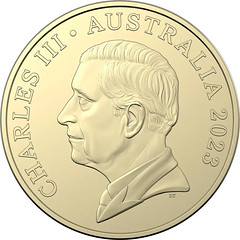 The Royal Australian Mint in Canberra has unveiled the new effigy of King Charles III that will appear on $1 coins before Christmas.
The Royal Australian Mint in Canberra has unveiled the new effigy of King Charles III that will appear on $1 coins before Christmas.
Since 1953, every Australian coin has featured Queen Elizabeth II, with the late monarch's coins remaining in circulation as legal currency.
From the end of this year, coins will begin bearing the image of King Charles III, and will feature some slight differences.
As is tradition, His Majesty will be facing left — the opposite direction to his mother.
The effigy, which was designed by the Royal Mint in London and approved by Buckingham Palace, will also see the king without a crown.
This is in keeping with the first depiction of Queen Elizabeth II on Australian currency.
To read the complete article, see:
Royal Australian Mint unveils image of King Charles III set to appear on $1 coins before end of this year
(https://www.abc.net.au/news/2023-10-05/king-charles-coin-unveiled-royal-australian-mint-canberra/102936920)
See also:
King Charles III's image to appear on Australian coins this year
(https://www.seattletimes.com/business/king-charles-iiis-image-to-appear-on-australian-coins-this-year/)
AUSTRALIA FIREFIGHTER COIN BULLSEYE ERROR
An error on Australia's 2020 $2 Firefighter coin makes it look like Her Majesty is being shot in the head. -Editor
Australia's 2020 $2 Firefighter coin was designed to be a collectable, but an error on the obverse side has made some even more so.
The coins were released in the aftermath of the Black Summer to commemorate the brave firefighters who battled bushfires across Australia, nine of whom died.
On the tails side, it features a male and female firefighter standing back to back as they wield their hoses against flames. A vivid, orange and yellow fireball sits in the middle.
But a handful of the commemorative coins were minted with an error.
It meant the coloured flame design was printed on the wrong side, right over the top of the late Queen's face.
The type of error is aptly named a bullseye, or an error in which the paint or coloured image is wrongly applied to the head side of a coin.
It's particularly common in Australia, where the typically circular designs on limited edition coins mean a mistake can plant a rather inappropriate bullseye symbol directly on the monarch's head.
An uncirculated (and therefore, mint condition) example of the coin sold at Downies Collectables for a staggering $5950.
The collectable retailer described Firefighter bullseye coin as excessively rare in any grade
.
Coin expert David Jobson, director of Town Hall Coins and Collectables, confirmed the rare coin was worth thousands.
Very few of them exist … So, depending on quality, they can be worth about $6000,
he told The Morning Show in 2020, when the error was discovered.
To read the complete article, see:
$2 Firefighter coin: Bullseye error worth $6000
(https://www.news.com.au/finance/money/2-firefighter-coin-bullseye-error-worth-6000/news-story/3a5bddf20541b4b0c08d75daf6228f45)
BRITISH MUSEUM SEEKS RECOVERY OF STOLEN ITEMS
Leon Saryan passed along this article about new web pages set up by the British Museum as it seeks to recover stolen pieces from its collection. Thanks. -Editor
The British Museum has launched a new section of its website dedicated to the recovery of 2,000 items that were stolen from its collection. Launching the public appeal today, the museum invites anyone who is concerned that [they] may be, or have been, in possession
of the missing objects to get in touch by email.
Up until now, the museum's investigation into the items whereabouts has taken place behind closed doors in partnership with London's Metropolitan Police, with actions like monitoring the art market and registering the items on the Art Loss Register. These steps appear to have had some modest success, with 60 of these pieces now safely returned and a further 300 identified and soon to be returned.
The museum has chosen not to share all the details about which items remain missing on the advice of recovery specialists,
although it is also likely that it is not able to list every item as many were never catalogued. Instead, it offers a guide to what kind of pieces are missing, predominantly ancient gems and jewelry from Greece and Rome.
A spokesperson for the Art Loss Register told The Art Newspaper that this policy may help prevent bad actors who discover they possess some of the antiquities from selling them through channels were fewer questions are asked
or by trying to sell items for their material value by melting them down. So far what information the museum does have about the missing items has only been shared with members of the antiquities and jewelry trade.
Those in possession of the treasures may well have snapped them up on eBay, where Higgs allegedly listed the stolen goods over the course of several years.
Am I the only one scratching their head trying to understand the utility of a vague listing of general descriptions of items that may or may not have been stolen? What could anyone ever do with that? Tell the Museum that one of their competitors has been selling items "matching" the descriptions? -Editor
To read the complete article, see:
The British Museum Has Launched a Website Seeking the Recovery of 2,000 Objects That Were Stolen From Its Collection
(https://news.artnet.com/art-world/british-museum-recovery-website-2368060)
See also:
British Museum asks public and experts to help recover stolen artefacts
(https://www.bbc.com/news/world-us-canada-66921621)
To read the earlier E-Sylum articles, see:
BRITISH MUSEUM GRAPPLES WITH THEFTS
(https://www.coinbooks.org/v26/esylum_v26n35a23.html)
BRITISH MUSEUM GRAPPLES WITH THEFTS
(https://www.coinbooks.org/v26/esylum_v26n36a14.html)
FRENCH COUPLE SUES DEALER
While non-numismatic, this story from France illustrates a contentious issue that often surfaces when a dealer's profit becomes public. -Editor
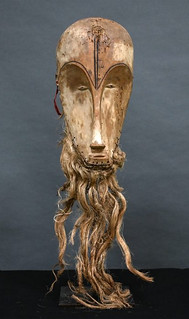 A legal case making its way through the French court system is raising questions about whether a person who has sold an artwork or artifact later determined to have a much higher value can seek further compensation.
A legal case making its way through the French court system is raising questions about whether a person who has sold an artwork or artifact later determined to have a much higher value can seek further compensation.
An unnamed 81-year-old woman and her 88-year-old husband came across an African mask while clearing out their second home. While most of the contents of the home went into a garage sale, they decided to sell the mask to a local antiques dealer, who agreed to buy the mask for €150, or about $157, in September 2021.
Months later, they discovered through reading the newspaper that their mask had just made €4.2 million ($4.4 million) at a specialized auction in Montpellier. As it turned out, it was a rare Fang mask used in rituals in an African secret society. The object was brought back from Gabon by the husband's grandfather, who had been a colonial governer in Africa in the early 20th century.
The couple launched suit against the antiques dealer, who they believe cheated them. After several legal moves and counter moves, an appeals court in France determined on June 28 that their case against the dealer appears to be well-founded in principle
and has frozen the proceeds of the sale as the case continues.
The couple's argument hinges on the suspicion that the dealer had a good idea of the true value of the object when he bought it from them. The antiques dealer did not display the mask at his shop and instead contacted the auction houses Drouot Estimation and Fauve Paris, which estimated it to be worth about €100–€120, and €400–€600 respectively.
Despite these valuations given by two auctioneers, he went on to seek a third opinion from a specialized sale of African objects in Montpellier. After ordering analysis using carbon-14 dating and mass spectrometry, the mask was dated to the 19th century and an ethnologist's expert appraisal revealed it was used for purification rites by the Ngil society, a secret society that operated within the Fang ethnic group in Gabon until the 1920s.
The auction house placed the mask for sale with an estimate of between €300,000 and €400,000. The mask was sold for €4.2 million, about $4.4 million, at an auction in March 2022.
The case has already gone through several stages. The antiques dealer initially offered to settle out of court by paying the couple €300,000 euros, or about $315,000, for the mask but they were not able to reach an agreement because of the opposition of the couple's children, according to court documents.
I'm having trouble finding it in our archive, but I recall a story from Western Pennsylvania where a grandson sold 19th century U.S. Proof sets found in a piano bench to a coin dealer who later auctioned them for millions. In that case there was the aspect of stolen property muddling the title to the items. But this was a sale made willingly by the owners of the item. If the dealer didn't have an inkling that the mask might be more valuable he wouldn't have bought it in the first place, and his fruitless trips to two auction houses justify the low offer. But he persevered and was rewarded by the third auction house. I can understand the original seller's remorse, but they and their children could have done that due diligence themselves and chose not to. I think the dealer's post-sale settlement offer was very fair and likely not even required under the law. What do readers think about this topic? -Editor
To read the complete article, see:
An Elderly Couple Sold a ‘Worthless' African Mask for $157. Now They Are Suing the Buyer Who Auctioned It for $4.4 Million
(https://news.artnet.com/art-world/french-court-sides-with-couple-after-antiques-dealer-flips-fang-mask-2370870)
LOOSE CHANGE: OCTOBER 8, 2023
Here are some additional items in the media this week that may be of interest. -Editor
Pu Yi Wedding Type20 Cents
Here's a more harmonious example of a dealer discovering a seller's treasure. -Editor
Several times a week the Boston Gallery gets calls regarding world coins that people inherited from parents or grandparents acquired during travels in the past. Usually these accumulations comprise demonetized coinage often commonly traded as world poundage in the industry. There are a few instances when some silver coins are picked out of the lots. And then there was this exception.
A few weeks ago, a woman called and stated that she and her siblings inherited an accumulation of world coins and inquired if we would give her a valuation and an offer to purchase the coins. We scheduled an appointment to review her coins and give her an offer to purchase. When she came in, we found the collection to be better than the average accumulation of world coins that comes through the gallery. It contained many common silver coins circulated in different parts of the world and, hidden among them was a high-grade silver coin from China.
I informed the woman that she has a China, Year 15 (1926) Tientsin Mint Pu Yi Wedding Type
20 cents in high-quality condition and recommended she consign it to one of our signature auctions. This is a popular China type coin among collectors because it features the old emblem of China (the Twelve Symbol national emblem from 1912 to 1928) consisting of a dragon and a phoenix (or a peacock) holding sacrificial cups over an axe head on the obverse. The reverse features the value in Chinese within a wreath with the year and fractional denomination of the coin written in Chinese. The woman agreed with my recommendation of grading this coin and then selling it in one of our auctions. This coin was submitted to PCGS for grading and received a Mint State 62 designation. It is featured as lot 32433 in our October 2023 Hong Kong Auction.
To read the complete lot description, see:
CHINA. 20 Cents, Year 15 (1926). Tientsin Mint. PCGS MS-62.
(https://auctions.stacksbowers.com/lots/view/3-15CTLW/china-20-cents-year-15-1926-tientsin-mint-pcgs-ms-62)
To read the complete article, see:
IT ONLY TAKES ONE…
(https://stacksbowers.com/it-only-takes-one/)
As the previous articles show, working with a dealer is as important as ever. Andrew Crellin of Sterling & Currency published an article on the topic this week - here's the introduction from his October 2023 email newsletter. -Editor
Australia's numismatic market has changed significantly over the three decades I've been involved in it - with the advent of eBay; Gumtree and the multitude of collector pages on social media websites, many collectors have the option of never needing to talk to a rare coin dealer. It won't surprise you at all if I say that coin dealers like myself still have a role to play in numismatics in 2023 - this article explains what it is. If you're thinking that the images included in it look a little bit screwy, that's because they were created with an AI tool...
To read the complete article, see:
How to Find the Right Coin Dealer for Your Collection
(https://www.sterlingcurrency.com.au/coindealer)
A Florida man was arrested at a McDonald's for counterfeiting. -Editor
A messy McDonald's patron ended up in handcuffs after he littered the floor around his table with $100 bills, according to the Collier County Sheriff's Office.
It happened Sept. 27 at a McDonald's in Naples before restaurant staff called the cops, officials said in a news release. Naples is about 170 miles south of Tampa.
Around 1:35 p.m. (a man) ordered a meal ... and paid for it with a fake $100 bill. Recognizing the money was fake, workers returned it to (him) and took back the meal,
officials said.
Detectives responded and ... found multiple counterfeit bills and washed dollar bills in (his) pockets and on the floor under his table in the restaurant.
To read the complete article, see:
Messy McDonald's customer left floor littered with $100 bills, Florida cops say
(https://news.yahoo.com/messy-mcdonald-customer-left-floor-112447423.html)
Well, it sure feels like an industry today, but behind all the business and money surrounding numismatics today, at its heart is a basic collecting interest found in all of us who enjoy the hobby. Here's a recently republished Dave Bowers column on the topic, opening with a quote from Joe Boling. -Editor
"Thank you for using the word HOBBY in the title of your June 19 Coin World column, instead of INDUSTRY. I detest the use of the latter word in conjunction with numismatics."
The other day, I received a telephone call from an industrialist—he owns a factory in the Midwest—who had just entered coin collecting. The first thing he bought—and this was from a local coin shop—was a like-new 1943 zinc-coated steel cent for $4. He thought this was the greatest thing since sliced bread and was enthusiastic that such a low price could net him such a historical item. He was and is set to enjoy the hobby of coins.
To read the complete article, see:
Bowers on Collecting: hobby versus industry
(https://news.coinupdate.com/bowers-on-collecting-hobby-versus-industry/)
FEATURED WEBSITE: CAMP MONEY NOTES
This week's Featured Web Site is Dave Frank's Camp Money Notes. Found via News & Notes from the Society of Paper Money Collectors (Volume IX, Number 16, October 3, 2023).
The ultimate comprehensive resource for 20th Century camp money
What is Camp Money?
Two innocuous words that describe the currency of the many kinds of prison camps that held military and civilian captives during World War I and II.
The history and understanding of camp money is a field that is unfamiliar to the numismatic community as well as the general public. The purpose of this site is to present much of what is currently known about this elusive topic and to stimulate further discovery and research into this obscure subject of the 20th Century.


